

ISSUE Your New Frequency Summer Solstice SUMMER - ISSUE 18 THE

2 Contents 28 Let’s go outside How do new experiences bring the long days of summer alive? 36 Living life in vibrant colour Understanding your relationship to colours 42 Shades of perfection A look at how ‘getting our colours done’ has benefits for our busy lives 48 A sense of wonder Have we forgotten how to marvel at the smallest, simplest things? 56 Free spirits How can we recapture the carefree feeling of life before adulthood? 5 From the editor How to enjoy all that summer has to offer 6 The mindful five Ease into summer with Kintsugi’s very own Gold range and more 8 The reading list Celebrating confidence, truth and fiction, photography, maternity, solitude, beaches and country gardens 10 Five apps for… …reconnecting with nature and enjoying the natural world in summer 12 A summer state of mind and heart Kintsugi’s editor reflects on how to embrace the feeling and opportunities of summer in all areas of our lives 16 The summer expansion Feel the energy of a season that is all about expansion, abundance, intuition and the fire insides 24 The healing power of micro joys How small but beautiful moments make us more resilient 36
How does giving to others benefit our hearts and minds?
82 The good life Beauty launches for summer 90 The psychological effect of colour


The power of play Exploring the psychological benefits of letting loose

Colour is a many splendored thing, says Dr Asma Naheed 94 Jewellery – the ultimate mood booster

How the power of jewels goes beyond their mere appearance
How to truly love your summer body
Managing Editor Dr Asma Naheed Editor Elle Blakeman
Editorial Assistants Paris Starr
Annabelle Spranklen Creative Director Vanessa Grzywacz
IMAGES: COVER: PEXELS/VALERIYA KOBZAR. THIS SPREAD: PEXELS, UNSPLASH/MOURAD SAADI, PEXELS/ALLAN MAS
62 Generosity is good for the heart
68
74 Are we addicted to success?
Exploring why being busy is no longer a badge of honour 80 The body reconditioning
80 82 48
96 Story of wisdom The power of a word
Beautiful vibrant shades that pop up from the ocean to the fields, our world at its most resplendent

ILLUSTRATION: CLYM EVERNDEN. IMAGE: PEXELS/ARTEM BELIAIKIN
From the editor...

What does summer mean to you? It’s something we have been asking ourselves here at Kintsugi Magazine. For me, summer is my favourite season, a time filled with pure joy and light, with beauty and possibility.

As I note in my column (page 12) I have recently been inspired by some incredible books which have reminded me reminded me of the importance of creating a life filled with love, gratitude and joy. It is a theme that has come up over and over again this issue, how to slow down and find the joy all around us. In her feature, The Summer Expansion (page 16), Emma Johnson writes about the way in which summer heightens our awareness of our senses and how we physically experience the world – the sun and the breeze on our skin, the smell of flowers, the sound of bees, the warm grass under our feet, the taste of strawberries picked from the field – this heightened awareness providing the perfect time to pause and check in with yourself. To listen to your intuition and feel the abundance around us.
For some, summer can unlock a sense of wild abandon, a zest for life that pushes us to try new things. In this issue we speak to three writers who recall pushing themselves during the summer season, trying everything from wild swimming to firewalking (page 28).

To me summer also means colour – beautiful vibrant shades that pop up from the ocean to the fields, our world at its most resplendent. In this issue, we explore the way we experience the world through colour (page 36) while our own Kintsugi Psychologist Dr Asma Naheed explains the deeper psychological effects that colour has on our brains and the surprisingly strong influence they hold, advising us to select the colours of our lives just as an artist would (page 90). We also meet Linda Mattolini, Italy’s most in-demand image consultant to ask how wearing colour can affect the way we feel and the way we are perceived (page 42)
While we are often sold joy as big moments – the weddings and celebrations and so on – it’s the daily pleasures that really keep us going says writer Anna Bartter. In her feature on page 24 she makes a compelling case for the power of micro joys; meanwhile Emma Johnson asks how we can recapture that feeling of wonder we had as children (page 48). And speaking of micro joys, our columnist Najla Mae explores the uplifting power of jewellery on page 94.



Finally, we look at how being busy is no longer the badge of honour it once was (page 74). With ‘hustle culture’ leaving more and more of us feeling overwhelmed and overworked, we ask if now is the time to pause, step back and do less, thus giving us more time to do things with meaning, to have experiences and connections that really matter. I can’t think of a better time than summer to start. Enjoy the issue.

5 EDITOR'S LETTER
Ovu-plate, £85, Anissa Kermiche
Elgin sunglasses, £150, Finlay
Lake Como Idyll, £85, Assouline
Flora rose gold, morganite and diamond earrings, POA, Lily Gabriella
Alicia swimsuit, £390, Emilia Wickstead
The Mindful 5
Ease into summer with wildlife-friendly resortwear, rainbow glassware, refreshing scent, pretty napkins and Kintsugi’s very own Gold range
WILD THING
Emporio Sirenuse, the lifestyle brand of the renowned Le Sirenuse hotel in Positano, has partnered with wildlife charity Elephant Family on a chic new collection of resortwear. The High Summer pieces have been designed as an homage to the beauty of life in the wild, featuring a mix of jungle prints and exquisite embroidery. What’s more, 10 per cent of all the profits will go towards protecting endangered wildlife and their habitats.
Giada Akroterion Caftan, £428, Emporio Sirenuse x Elephant Family

6
RAINBOW BRIGHT
As the mercury starts to rise, it’s more important than ever to stay hydrated, though we know getting your recommended daily two litres can sometimes be tricky. So why not turn drinking water into a delight with this eye-catching jug from Rebecca Udall?

Crafted from Murano glass that’s hand blown by artisans in Venice, no two jugs are the same, turning each one into its own miniature piece of art.
Allegra Murano jug, £155, Rebecca Udall
ISLAND LIFE
There’s nothing like a fresh, zingy scent to herald the start of summer, and this new offering from Miller Harris does just that. Inspired by the idyllic Greek island of Hydra, citrusy notes of cedrat and lemon combine with fig, sea salt and saffron for a sparkling fragrance that will immediately transport you to the Med. Effortlessly capturing Hydra’s bohemian spirit, it’s the perfect spritz for warm, sun-drenched days.
Hydra Figue eau de parfum, £125, Miller Harris

MOMENT OF CALM
How can you ensure you take the soothing atmosphere you cultivate at home away with you when you travel? This new collection – featuring miniature versions of the empowering Kintsugi Gold range – allows you to do just that. Inside you’ll find travel-sized minis of the intensely nourishing Zero Body Oil, energising Thirteen Body Mist and uplifting One Five Three Room Mist. Designed to transform your surroundings and leave you feeling peaceful and positive, they're the perfect postflight pick-me-ups.
Gold range collection, £30, kintsugispace.com
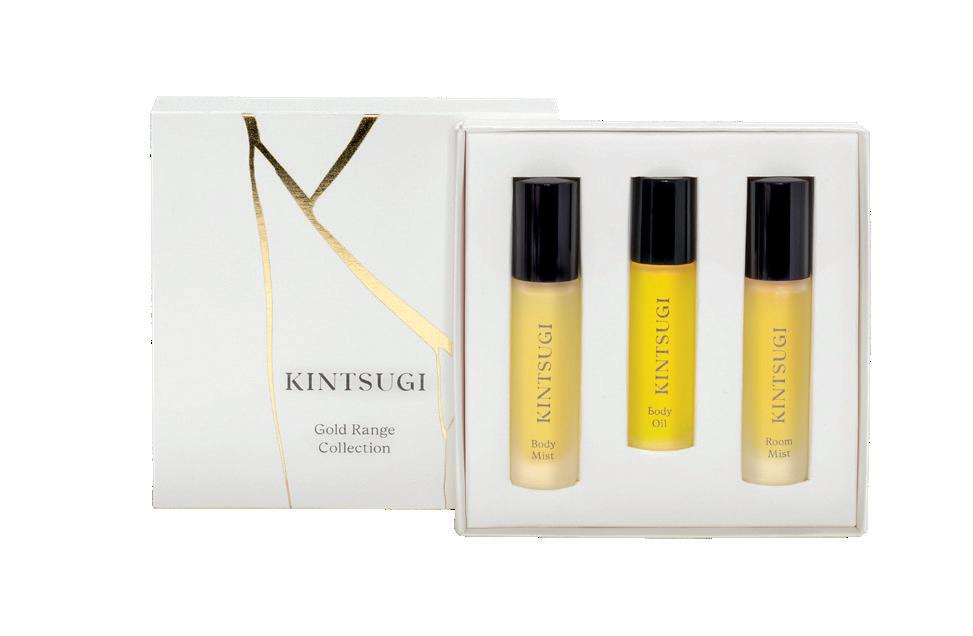
ART DE LA TABLE
The act of gathering friends together and hosting at home is always a joy, and that’s doubly true if you choose to decorate your table with this beautiful new collection of napkins and tablecloths from Polkra. Created in collaboration with Hot Pottery, who have brought their signature ‘splatter’ design to table linen for the first time, it’s available in electric blue, smoke green and lilac, and is guaranteed to bring a touch of flair to your summer table.
Linen napkins, £47.50, Polkra x Hot Pottery


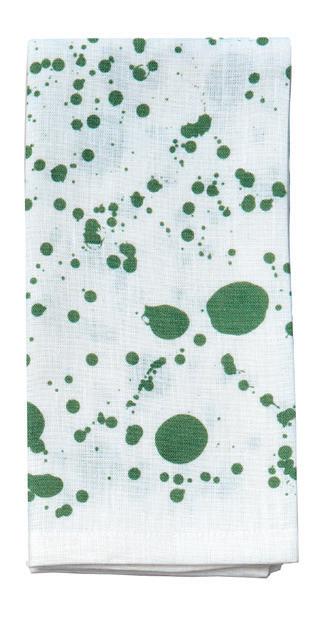
7
The Reading List
Our summer reading list celebrates confidence, truth and fiction, photography, maternity, solitude, beach life and country gardens
Happy High Status: How to Be Effortlessly Confident

VIV GROSKOP (TRANSWORLD)
Executive coach and stand-up comedian Viv Groskop offers a powerful – and often hilarious – guide to channelling an authentic sense of confidence in our daily lives.
According to Groskop, ‘Happy High Status’ is that moment when everything feels right and life is easy; like the feeling of waking up on your birthday, or completing a run you didn’t want to go on. While this sensation is often fleeting, Groskop is here to tell us we can access it almost any time. Packed with practical tips, this is a game-changer when it comes to harnessing your inner strength.
The Fraud
ZADIE SMITH
(HAMISH HAMILTON)
The arrival of a new Zadie Smith novel is always a highlight on the literary calendar –and, because The Fraud marks her first work of historical fiction, it’s causing an even bigger splash than usual. Based on the real Tichborne trial, which captivated England in the 1870s, the book centres around widowed Scottish housekeeper Mrs Eliza Touchet and the trial’s star witness Andrew Bogle, who grew up enslaved on the Hope Plantation in Jamaica. Playing on themes of truth and fiction in a world of hypocrisy and self-deception, it makes for a dazzling read.
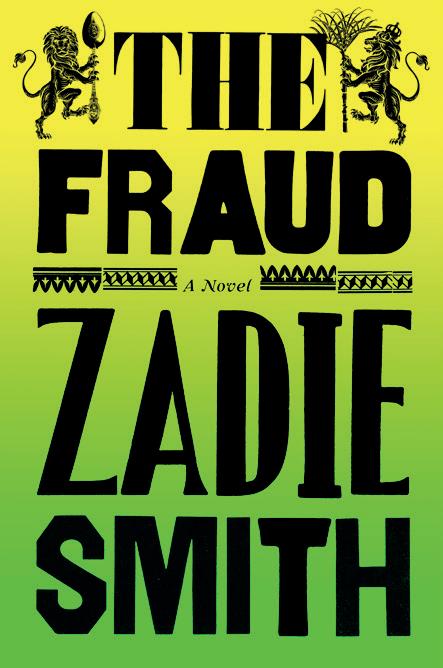
Lee Miller: Photographs
ANTONY PENROSE
(THAMES & HUDSON)
Lee Miller is one of the most important photographers of the 20th century and soon to be the subject of a film where she’ll be portrayed by Kate Winslet, so this new book – featuring 100 of her most outstanding photographs – couldn’t come at a better time. Carefully compiled by her son Antony Penrose and featuring a foreword by Winslet herself, this evocative tome collects Miller’s most famous documentary, fashion and war works. The result is a fitting tribute to the seminal photojournalist, war correspondent and surrealist muse.

8
Matrescence: On the Metamorphosis of Pregnancy, Childbirth and Motherhood
LUCY JONES (ALLEN LANE)

We all know the transition into motherhood is a life-altering one – but, until fairly recently, no one realised quite how startling the effect is on the mind, brain and body. This radical new examination by acclaimed journalist and author Lucy Jones draws on research across various fields – from neuroscience and evolutionary biology to psychoanalysis and sociology – to shine a light on the emerging concept of matrescence. An eye-opening read, the book reveals that the maternal changes a woman undergoes are far more profound, wild and enduring than we could ever have imagined.
Hermit: Finding

Freedom in a Wild Place
JADE ANGELES FITTON (HUTCHINSON HEINEMAN)
The word ‘hermit’ often has negative connotations, but this inspirational story of recovery celebrates solitude in the natural world. When Fitton’s partner unexpectedly leaves her, she faces an uncertain and lonely future. But as she acclimatises, she starts to consider what it means to live alone and reaches out to recluses around the world. Through these conversations –and in reconnecting with the salted cliffs and damp forested footpaths of Devon, her childhood county – she discovers the power of being alone.
Beach Life
STEFAN MAIWALD (TENEUES)
Let’s be honest: wherever we happen to be, nine times out of ten we’d rather be at the beach. This coffee table book is dedicated to that eternal yearning for sun, sea and golden sands, offering up spellbinding photography of some of the world’s most beautiful beaches. It’s also packed full of entertaining tales, such as how Coco Chanel invented summer tanning and where artists like Picasso went to harness extraordinary seaside lighting for inspiration. The only snag is that you’ll be hankering for a holiday as soon as you finish it.

Uprooting: From the Caribbean to the Countryside – Finding Home in an English Country Garden
MARCHELLE FARRELL (CANONGATE)
‘What is home?’ That is the central question at the heart of this lyrical book by psychiatrist Marchelle Farrell, and is a notion that has troubled her ever since, many years ago, she left the beaches of Trinidad for life in the UK. As she toils to bring her Somerset garden back to life, Farrell reflects on the troubled legacy of colonialism and her own uprooting, and comes to realise that her two seemingly conflicting identities are more intertwined than she ever realised.

9
BOOK OF THE MONTH
Five apps for… Reconnecting with nature
Find the ideal hiking trail, check the weather, enjoy birdsong, gaze at the stars and connect with flora as we enjoy the natural world in summer

10
IMAGE: PEXELS/TEONA SWIFT
ALLTRAILS
There’s nothing quite like heading off the beaten path and going on a hike when you want to feel closer to nature, but discovering lesser-known trails can be tricky. This handy app has been designed to take the guesswork out of finding local hiking paths, with more than 200,000 detailed, hand-curated trail maps. There are lots of clever features for narrowing your search, from sorting by length or difficulty to identifying dog and kid-friendly routes. There’s even a function that gives an estimate of how busy a trail is –invaluable when we’re looking for that moment of peace and solitude.
alltrails.com
MERLIN
It’s been proven that listening to natural sounds, such as birdsong, is beneficial for our mental wellbeing, helping to alleviate fatigue and stress. This app from the Cornell Lab of Ornithology takes that one step further by helping us to identify the birds behind those sweet-sounding chirps and trills. It’s a great tool for bird-watchers, whether we’re novices or fully-fledged twitchers. Insightful features include a bird ID wizard that can identify feathered friends from across the globe and an eBird function that allows us to build custom lists of the birds we’re most likely to spot wherever we are.
merlin.allaboutbirds.org
INATURALIST
Are you one of those people who can’t walk past a plant or a flower without finding out what it’s called? If so, this is the app for you. A joint initiative by the California Academy of Sciences and the National Geographic Society, it’s a musthave for botany enthusiasts. Simply take a photograph of the plant you want to identify and upload it to the app. Within a few seconds, you should have the answer. The app will also connect you with fellow nature lovers around the world who can help you identify anything from insects and flowers to rare species of mushroom. inaturalist.org
WEATHER UNDERGROUND
All dedicated nature lovers need a great weather app at their fingertips, and Weather Underground (or ‘Wunderground’) is one of the best around. It operates slightly differently to other weather apps on the market, drawing from more than 250,000 personal weather stations across the globe. The result is the most hyper-local weather data, wherever we happen to be in the world. From weather predictions and information on air quality to celestial information on moon phases and sunrise and sunset times, it’s invaluable for preparing us for what the great outdoors has in store. wunderground.com
SKY SAFARI
Stargazing can make us feel closer to the cosmos, while reminding us of our relative insignificance in comparison to the infinite expanse of the universe. Next time you step out to marvel at the night sky, brush up on your astronomy knowledge with this app, which allows us to locate planets, constellations and satellites at the touch of a button. With features including Galaxy View, where we can visualise the 3D location of stars and deep sky objects in the Milky Way, and OneSky, which allows us to chart what other users are observing in real time, it’s like having a mini planetarium in our pocket. apps.apple.com
11
5 4 2 1 3
A summer state of mind and heart
What does summer mean to you? As the days get longer and warmer, our Kintsugi editor reflects on how to truly embrace the feeling and opportunities of summer in all areas of our lives
As the warm rays of the summer sun shine down upon us, we are reminded of the joy and beauty that this season brings. It is a time to immerse ourselves in new adventures, connect with loved ones and fill our hearts with positivity and gratitude.
There is nothing quite like the sound of waves crashing on the shore, the feel of a soft summer breeze on our skin, or the awe-inspiring sight of a vibrant sunset. As we embrace the beauty of the present moment, we are able to cultivate a sense of peace and contentment within ourselves – one that radiates outwards and positively affects those around us.
Recently I have been inspired by incredibly powerful books, including Bruce H. Lipton’s The Honeymoon Effect and Michael J. Gelb’s How to Think Like Leonardo da Vinci. Reading reminded me of the importance of creating a life filled with love, gratitude and joy. By embracing our curious and creative sides, we unlock new ways of thinking and approach the world with a renewed zest for life.
Summer is about stepping out of our comfort zones, and saying ‘yes’ to new experiences and
opportunities that allow us to tap into the vibrancy of life. Whether it’s dancing beneath the stars, connecting with the sunrise or meditating to find inner peace, we have the choice to embrace every moment with open hearts and a curious spirit.
As we come together to share delicious meals and memories with loved ones, we must remember to savour every moment and truly connect on a deep, meaningful level. In these moments, we are reminded that life is about experiences and connections, rather than material possessions or digital interactions.
At the end of each day, reflect on all the moments of joy and connection that you have experienced and allow yourself to feel truly grateful. We are all blessed to be alive, surrounded by beauty and love, and are committed to sharing this joy and kindness with others.
So, as we celebrate summer in the state of the heart, let us embrace positivity, love and joy – both within ourselves and with those around us. May we all have a wonderful summer, filled with meaningful experiences and connections, and be inspired to live each day to the fullest.
12
let us embrace positivity, love and joy –both within ourselves and with those around us’

13
‘As we celebrate summer in the state of the heart,
PEXELS/COTTON BRO STUDIO

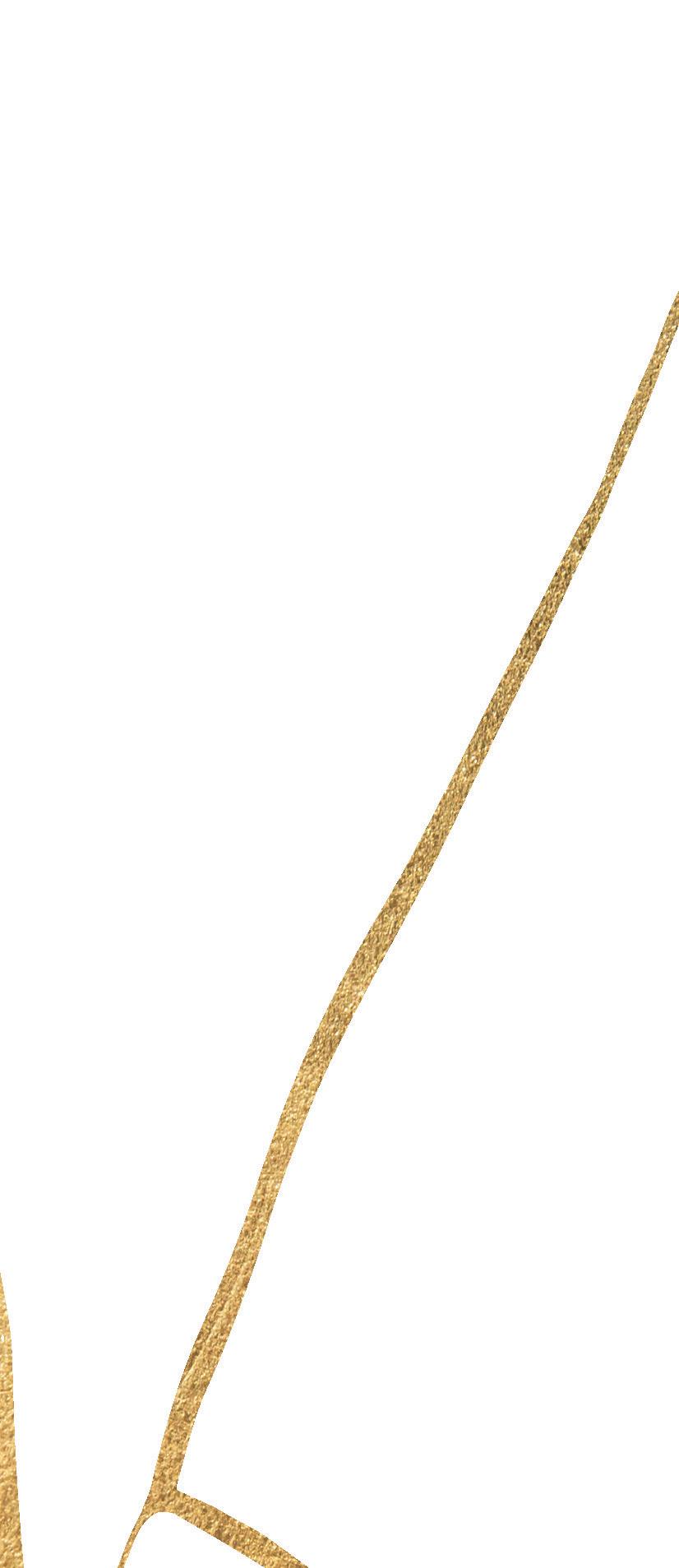
IMAGE: UNSPLASH/GIAN CESCON
‘Joy is prayer; joy is strength: joy is love; joy is a net of love by which you can catch souls.’
Mother Teresa
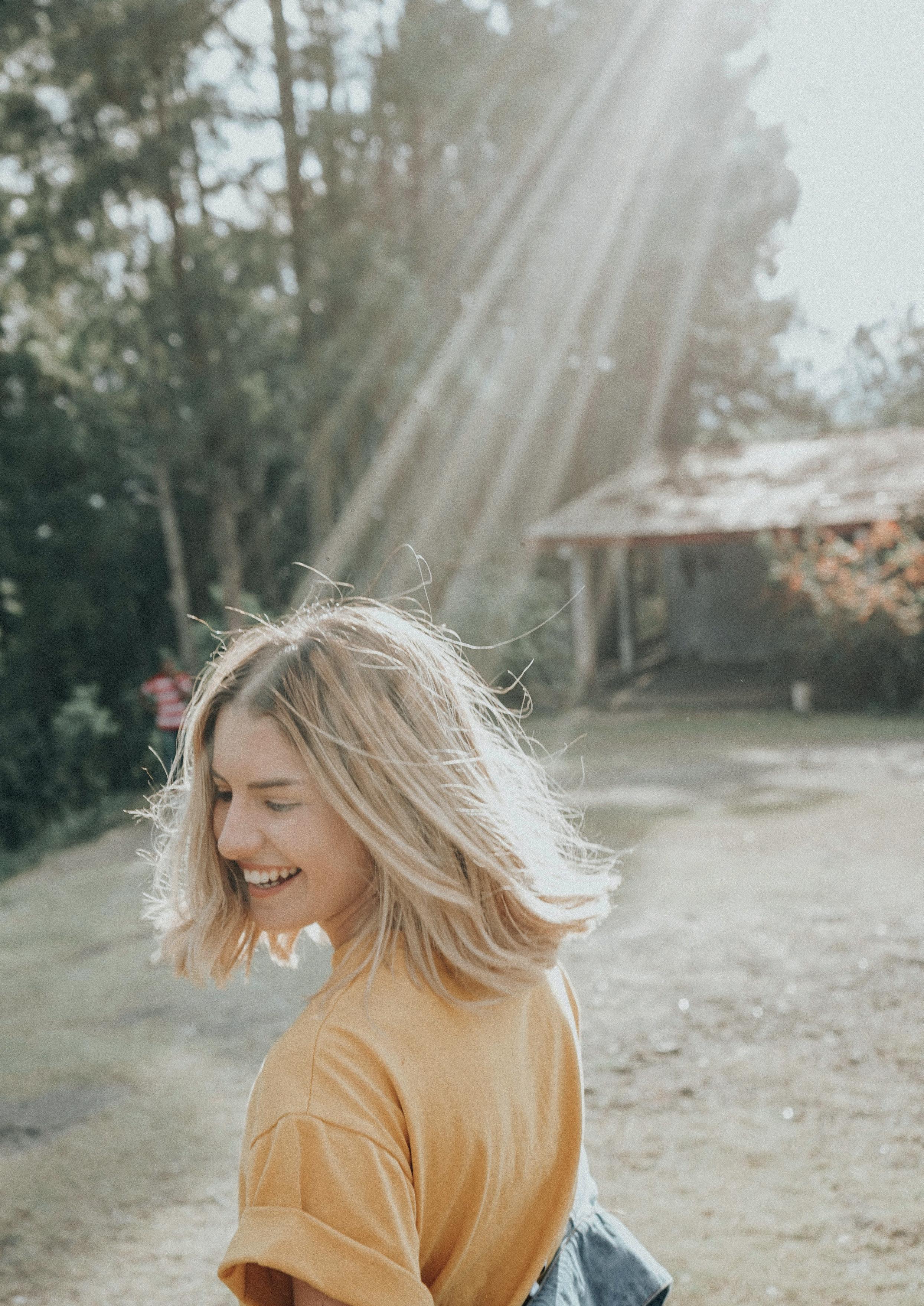

The summer expansion
As the earth warms and the sun rises high in the sky, summer is a time to feel the energy of a season that is all about expansion, abundance, intuition and the fire inside, says Emma Johnson

ENERGY



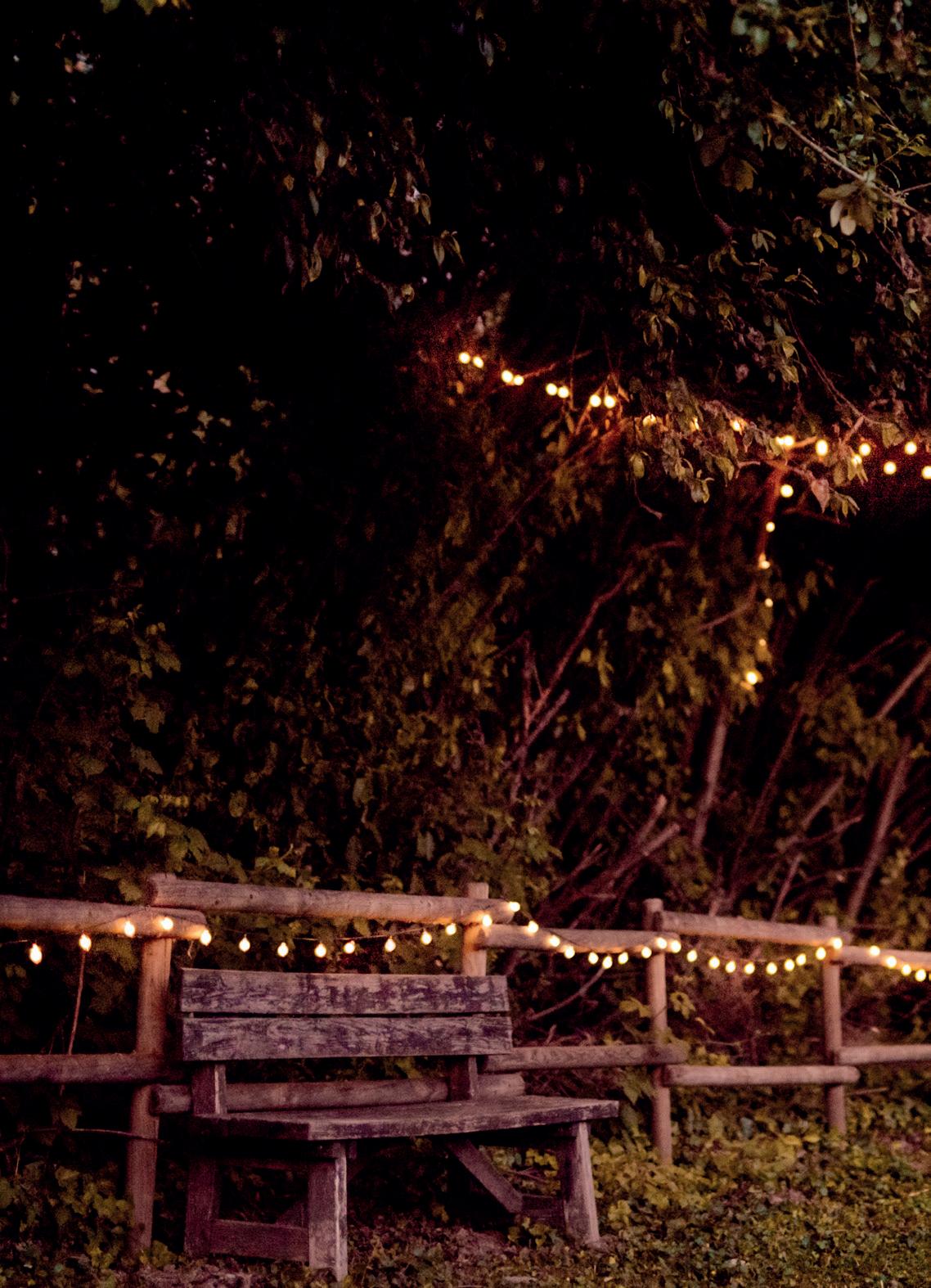
‘The heat of the sun brings an openness, a connection to others and a sense of abundance as we witness the garden bursting into life’
Summer bursts into life each May with a fire festival: Beltane – an ancient Celtic celebration that literally means ‘bright fire’.
Traditionally, in Ireland each year, at Beltane, a central beacon fire was lit on Uisneach Hill to mark the onset of summer. Tribal leaders would gather on the summit, and light their torches from the central fire, then take the fire back to their communities. From these flames, each family would light their hearth and use the fire to sustain them throughout the year ahead, linking the community together in a profound, elemental way.
This is the core idea of summer: a light within that grows and expands into the world, that offers us a chance to give our hopes and dreams the space to breathe, grow and come alive. ‘There is immense creative power available to you when you connect with the fiery energy of the summer and direct this energy towards what bring you joy,’ writes Isla Macleod in Rituals for Life
Gathering at Beltane, those who still mark it often use this time to cast into the fire the things in their lives that no longer serve them: self-doubt, fear and unhealthy relationships or habits. Into the space created by this metaphorical casting, we nurture the seeds of possibility planted in the spring. Now is the time to let ideas, new projects and tentative plans blossom and expand into being.
‘The three months of summer are called the period of luxurious growth. The breaths of Heaven and Earth intermingle and are beneficial. Everything is in bloom and begins to bear fruit.’ – Nei Jing
In traditional Chinese medicine, summer is also the month of fire. And in Five Element acupuncture, summer and fire are inextricably linked. Fire has the power to give light, and to illuminate our inner selves, as well as our external world. And the heat of the fire is important too. In ancient Chinese learning, heat means more than just temperature; it’s about how it makes things expand and change.
In our own lives, we can see summer – as with all seasons – as a time of change. The heat of the sun brings an openness, a connection to others, and a sense of abundance as we witness the garden bursting into life, or the vegetable patch bearing rich fruit. In Five Element acupuncture, the sound connected with fire is the sound of laughter, which is why we feel called to be with others, to celebrate the season with parties and picnics – to literally show our joy in a way that we can see and hear.
But summer is also a time of stillness, of intuition and connection with ourselves, or stillness and quietness in which we can listen to our inner voice. The busy expansion of summer can sometimes deplete our energies, so it’s important that we slow down, allowing the earth to nourish us and to help us recharge.
This is in part the effect of the heat of the summer, which brings a slower pace of life as we move more carefully in the hotter days. Often, we find ourselves simply lying down in the sunshine, just needing to rest and be still, in a way we wouldn’t do in autumn or winter. It may be that we also feel able to hold ourselves in silence and stillness in summer because it’s the time best suited to connecting with our intuition and our heart’s desire. The heart sits at the centre of Chinese thinking around summer. An organ of fire, it is the deepest part of ourselves, where we feel both love, and loss.
‘The heart is the sovereign of all organs and represents the consciousness of one’s being. It is responsible for intelligence, wisdom, and spiritual transformation.’ – Qi Bo
Learning to tune in and listen to our intuition is a key part of summer’s energy. As always, nature provides the space for us to do this. At the height of the summer, on 21 June, the Solstice arrives, almost like a sacred pause, the last moment of the »
19 ENERGY
IMAGES:
ADAI
PREVIOUS SPREAD: UNSPLASH/FUU. THIS SPREAD: UNSPLASH/PHILIPP CORDTS/MASAAKI KOMORI/MOURAD SAADI/LAURA
Summer heightens our awareness of our senses and how we physically experience the world – the sun and the breeze on our skin
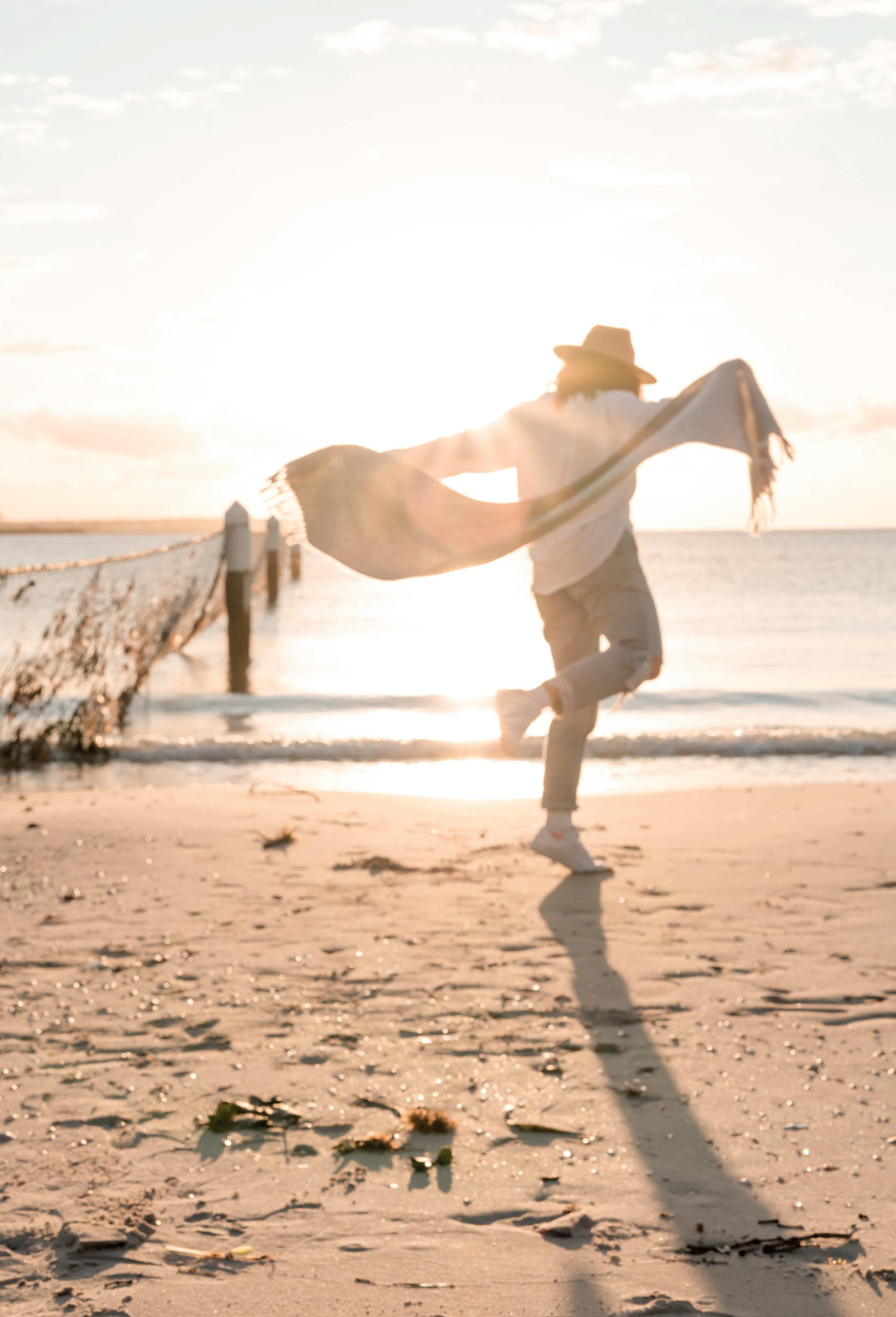
IMAGE: UNSPLASH/ KELL MCCLIINTOCK
receding night, before the balance swings and the nights become longer and the days become shorter. Solstice is all about sun, and strength and abundance – a bittersweet moment of transition and reflection.
‘This is the ideal time to pause and check in with where you are at this midpoint,’ writes Kirsty Gallagher in Sacred Seasons. ‘Your intuition is always there, waiting to guide you to wonderful new opportunities. It is a felt sense, rather than a thought –so practise tuning into the wisdom of your body and how things feel.’
If listening to this inner voice feels alien, start by simply listening to your body. Summer heightens our awareness of our senses and how we physically experience the world – the sun and the breeze on our skin, the smell of flowers, the sound of bees, the warm grass under our feet, the taste of strawberries picked from the field. Start to understand how your thoughts manifest in your body. ‘When you need to make a decision,’ writes Gallagher, ‘“feel” it in your body: how would it feel in your body to say yes? How would it feel in your body to say no? It will be subtle at first, but the more you work with and act on your intuition, the more you’ll learn to trust it.’
As you move your body in the warmth, give yourself the space to dance, walk and stretch. Feel the difference in the rhythm of the days from autumn and winter. How does the light and the heat affect the things you do? How does your body feel different? How is the fire moving through you?
‘The invitation of summer is to create, express, dance, celebrate and gather in community, enjoying the beauty of the natural world and your sensual body,’ writes Isla Macleod. To strengthen that connection, light a candle each morning and sit in the simple stillness of its gentle light. Connect with the fire and allow that inner voice to speak to you.
As summer moves on, the final celebration of Lammas, or Lughnasa, arrives in August, representing sacrifice, nourishment and giving. In farming communities, this is the time of the first harvest, the cutting of the corn, the reaping of what we sowed. It’s a time of reflection and gratitude for all that we have, and a gentle acknowledgement of the circularity of life. With great growth and great abundance must come great death. As the corn is cut down in the fields, life moves on, the death of the crops bringing sustaining life to us.
This is a good time to go a little deeper into yourself and consider the idea of giving. What can you give away, or let go of, to help others? And, in turn, help yourself? In some cultures, Lammas is a time to make and give away loaves of bread, to symbolise the gift of bounty and the moment of harvest. But, more metaphorically, perhaps you can think about what you are harvesting in your own life. What seeds have flourished and provided, and what have you neglected? What kindness or acceptance can you give to yourself, and to others? What healing can come from giving?
While Lammas is a celebration and a time of physical busyness as we gather the fruit of our labours, it is also a potent time for slowing down a little – another sacred pause in the circling year. As we reflect on the fire of summer, the voice of our heart, the sensuality of our body and the abundance of this season, we can begin to feel more deeply into the turning wheel of our year, and the different, vital energy of each season.
‘When the pace of modern life can feel overwhelming, connecting back to a more steady, rural-based tradition, adopting a slightly less frenetic pace… can offer a moment of respite and us thrive in this rapid pace of change.’ –
Rebecca Beattie
ENERGY 21
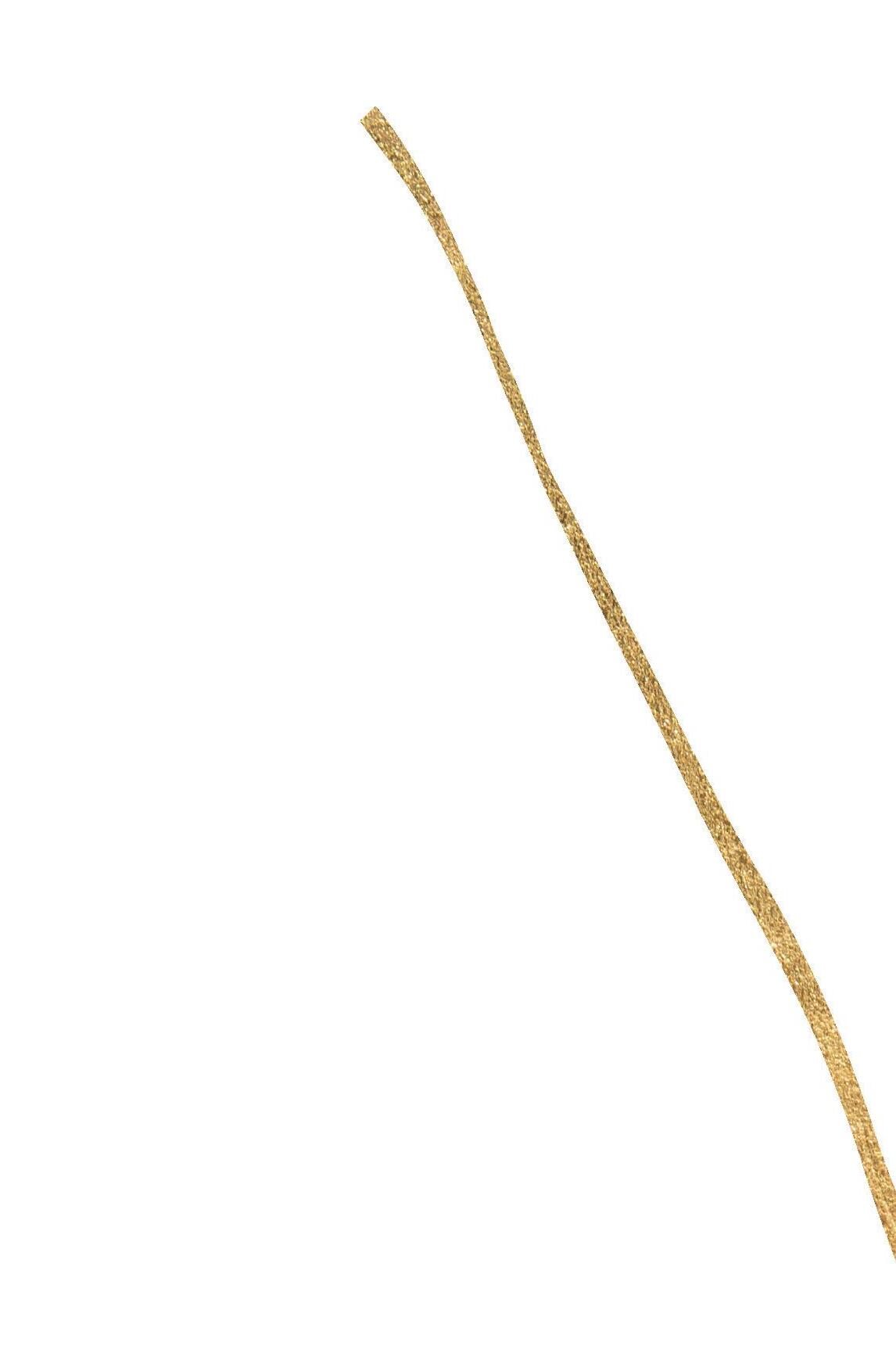
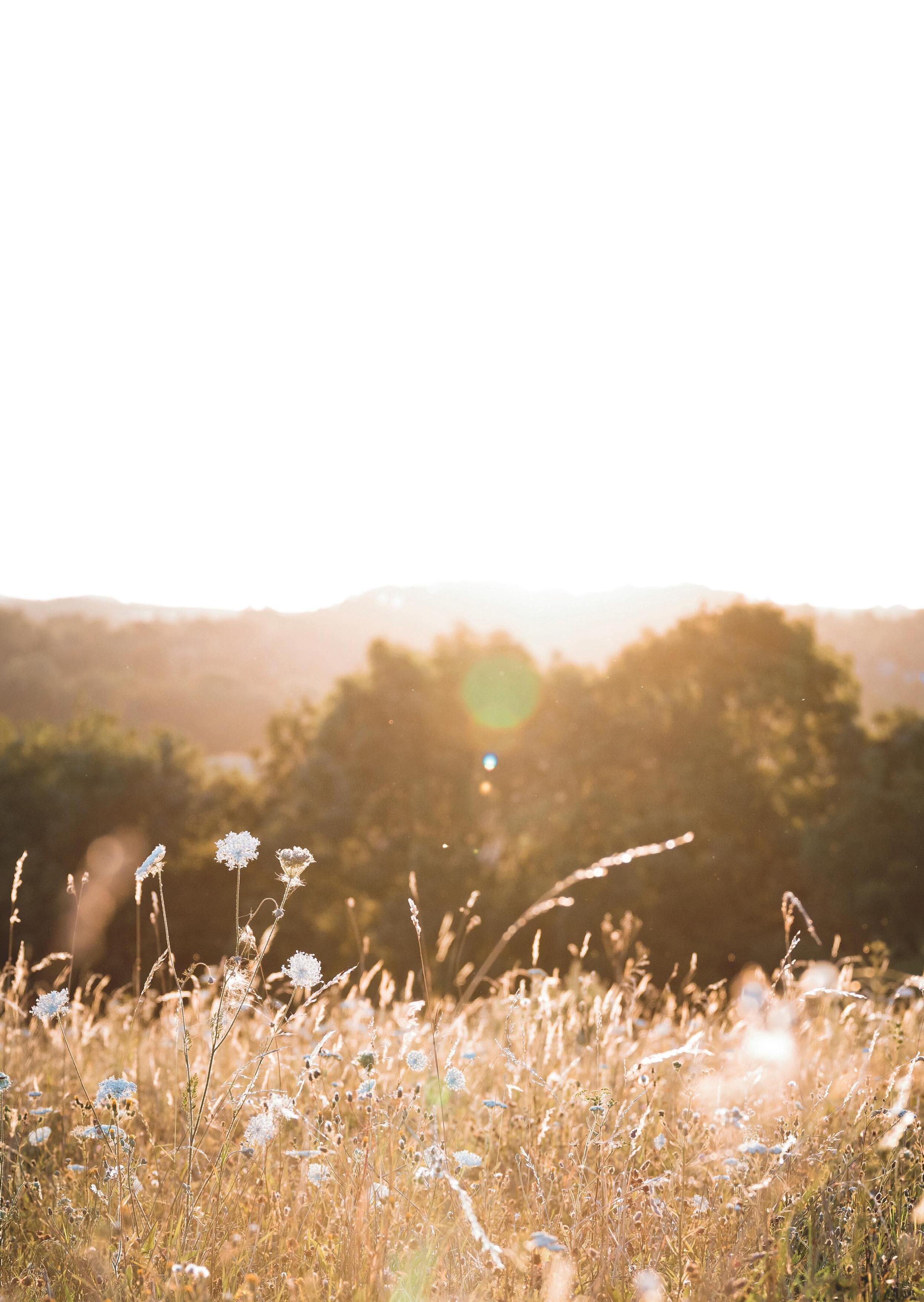

IMAGE: PEXELS/NIKLAS HAMANN
‘Summer afternoon – summer afternoon; to me those have always been the two most beautiful words in the English language.’
Henry James
THE HEALING POWER OF MICRO JOYS
We often think of joy as big things – the weddings and birthdays and celebrations that make up a life. But it’s the daily pleasures that really keep us going, says Anna Bartter. She explores how small but beautiful moments make us happier, healthier and more resilient
24 WELLNESS
IMAGE: PEXELS/MONICA TURLUI

What does joy feel like to you? Pure, unbridled, simple joy? Perhaps the sun warming your face after a long winter? Or a moment to breathe in the fresh, dewy air as you leave the house in the morning? People experience joy differently, and for different reasons, but we all feel it – and it can be found all around us. Experiencing joy has been shown to have physical and mental health benefits, boosting the immune system and reducing stress. Some experts even believe it could help us to live longer.
It’s difficult to define, but there’s something deeply spiritual about joy. Regardless of our individual beliefs, it provokes the sensation of being part of something bigger than ourselves. Imagine the feeling of looking up at a sky filled with stars, so vast it takes your breath away: that’s joy. Awe. Wonder. Brené Brown describes it as ‘the good mood of the soul… an intense feeling of deep spiritual connection, pleasure and appreciation’.
The wonderful thing about joy is that – be it fleeting and transient or deep and long-lasting – it is always, unfailingly, heart-lifting. While happiness can seem elusive, moments of joy transcend personal circumstance and can be accessed by us all, anytime we feel it. Even during dark times, there is always joy to be found in a day, once we know where to look – and if we can learn to harness those ‘micro joys’, they have the power to transform the mundane into the magical.
More than this, the ability to notice and appreciate tiny, everyday moments of joy could be the key to a happier life: after all, the small moments add up to a lifetime in the end.


‘Sprinkling micro-joys throughout daily life has the power to transform the ordinary into extraordinary,’ says chartered psychologist Catherine Hallissey (catherinehallissey.com)

‘Whether it’s taking the time to savour the smell and taste of your morning coffee, to that feeling of awe you get as you look up at the stars – even if you’re simply taking out the bins –these moments are incredibly powerful.’
If we’ve learned nothing else over the past few years, we have a renewed appreciation for the simpler things in life. A hug with a friend, a walk in the sunshine, a delicious meal… we all came to view these in a new light – moments of contentment punctuating endless months of strange isolation. And it’s a

26
‘If you suddenly and unexpectedly feel joy, don’t hesitate. Give in to it. Don’t hesitate.’
MARY OLIVER
practice that lots of people have tried to carry forward as we slip back into more recognisable times.
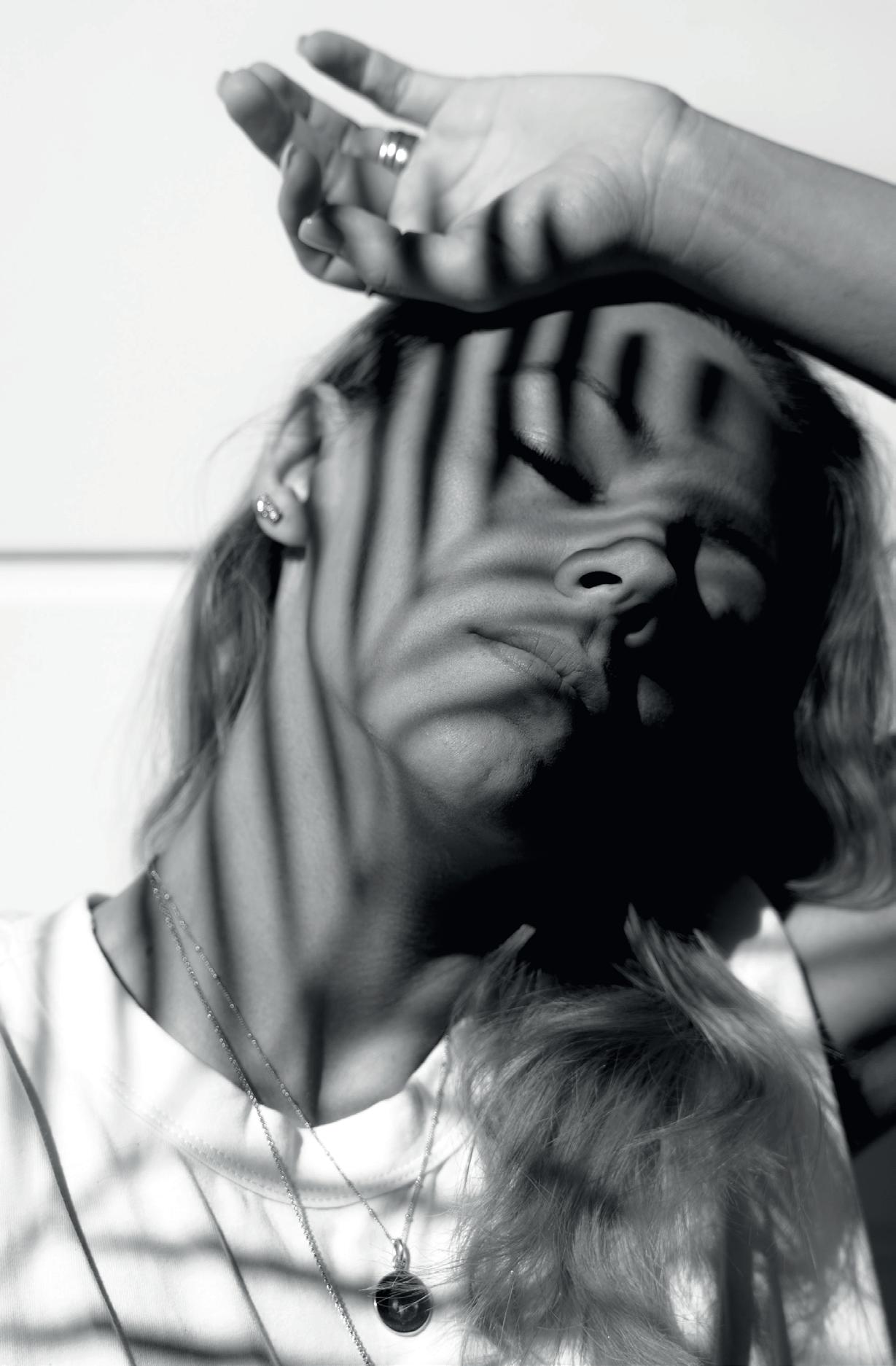
‘Increasing your appreciation for the ordinary magic all around you helps to boost your mood and increase contentment,’ says Hallissey. ‘When you take the time to notice and drink in these moments, you slow down time and come into the present moment. These tiny acts of mindful awareness help to reduce stress as you slow down, just for a moment.’
For those of us who struggle with structured mindfulness practice such as meditation, unable to switch of our racing thoughts, micro joys are perfect. Even the very busiest among us can take notice of the things we do routinely and unconsciously – slowly pushing the percolator down on a cafetière, taking a deep breath of fresh air on our walk to work – and transform them into a micro joy.
For me, it’s all about that first cup of tea in the morning, or a hot shower after a long day. Slowing down and relishing the feeling of the warm water running down me, breathing the steam into my lungs, I feel my cares melting away, even if it’s just for a moment, before I step out into my life again. And since I’ve discovered that I’m able to take such pleasure from the simple things I do each day, I find myself looking forward to these tiny moments, creating what researchers describe as a positive ‘upward spiral’ of contentment.
Joy is also known to increase resilience. Safe in the knowledge that tiny, beautiful moments are ahead, even the toughest of times can seem more manageable.
We can’t always allow time for long self-care rituals. But if we can begin to bring more awareness into our daily habits, we can start to build regular moments of gratitude, resilience and optimism and weave them throughout our everyday routines.
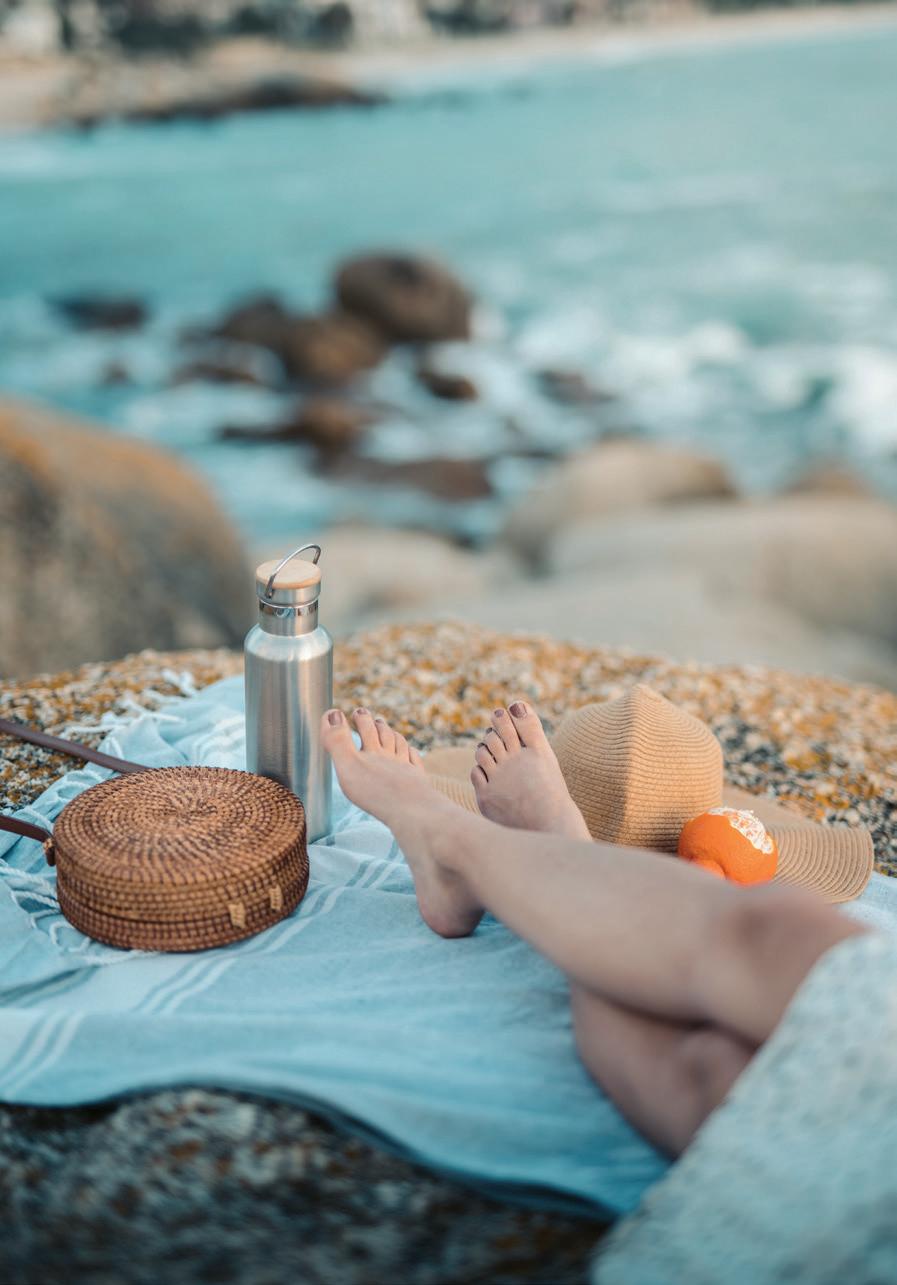
To get started, Hallissey recommends ‘picking one or two activities you do regularly and slowing down to savour the sensory experience’. For example, ‘Create a ritual out of your morning and drinking your first cup of tea. Or focus on the scent of your lavender pillow spray right before you fall asleep. The more you do this, the more you will begin to see the ordinary magic all around you, which will bring profound benefits to your wellbeing.’
To quote W. B. Yeats, ‘The world is full of magical things, patiently waiting for our senses to grow sharper.’ Slow down and take time to notice how your body feels, what makes your soul sing. Your most joyful life is out there waiting for you.
27 WELLNESS
IMAGES: PEXELS/COTTONBRO STUDIO/MITBG/BEN MACK/TARYN ELLIOT/THIRDMAN
LET’S GO OUTSIDE
Summer is the time to leave the confines of home and seek adventures outside our comfort zone. Three writers reflect on new experiences that bring the long days alive
The summer I tried… gardening
Green-fingered isn’t what I would call myself. Having grown up in a London flat with no outdoor space, I wasn’t one of those children that was raised on the delights of cultivating seeds into plants, or plunging hands into the soil. But even though I was denied an outdoorsy upbringing, I have always found myself drawn to nature. Some of my happiest childhood memories are of afternoons in my grandfather’s sun-filled garden, helping him tend his beloved tomato plants.
So, when I finally got my hands on my very own garden for the first time, I was overjoyed – and more than a little overwhelmed. Don’t get me wrong, we’re not talking Kew Gardens here. You can cross the postage stamp-sized garden in three large strides, and my flowerbeds measure only about 30cm across. But finally I had that little slice of outdoor space my soul had craved so long.
Despite not having a clue what I was doing, I set about transforming my bedraggled patch of earth. Moss was scraped from the lawn and the turf turned over, ready to be sprinkled with grass seed to revive its decidedly patchy appearance. Next, a trip to the garden centre, where I gleefully piled a trolley high with flowers.
Pastel-coloured lupins! Fuchsia roses! Purple peonies! Creeping clematis! I was like a kid in a sweet shop, bedazzled by the array of scents and colours.
As any novice gardener will attest, I was brought back to earth with a bump as soon as I planted my beloved purchases. The seed didn’t transform our lawn into a lush, verdant carpet: it created an all-you-can-eat buffet for the birds. My Instagram-worthy lupins were decimated by ravenous slugs and snails. As for my hot pink roses, which I planted to recreate the vibrant blooms of my wedding bouquet, they quickly developed black spot, the most serious of all the diseases for roses.
It seemed my green-fingered ambitions were not to be.
Yet I knew I couldn’t give up – the bucolic haven of my dreams was worth fighting for. So I went back to the drawing board and started reading up on plants that would flourish in my garden. Which are perennials and which are annuals? Which need sun and which need shade? Which are hardiest and the least delicious to creepy crawlies? Slowly but surely, I filled pots and borders with plants that not only survived, they thrived.
It’s no secret that gardening is good for your physical, social and mental health. Thirty brisk minutes of gardening can burn the same calories as badminton, volleyball or yoga, and people living near green spaces report less mental distress. Meanwhile, in 2021, the RHS revealed those who garden every day have wellbeing scores 6.6 per cent higher and stress levels 4.2 per cent lower than people who don’t garden at all.
I’ve certainly felt these benefits for myself. And now I reap the rewards of my labour every day when I sit outside in my little patch of green and listen to birdsong in the trees or watch bees buzz around my lavender. My garden is an oasis of calm in my hectic life – and I genuinely don’t think I could live without it.
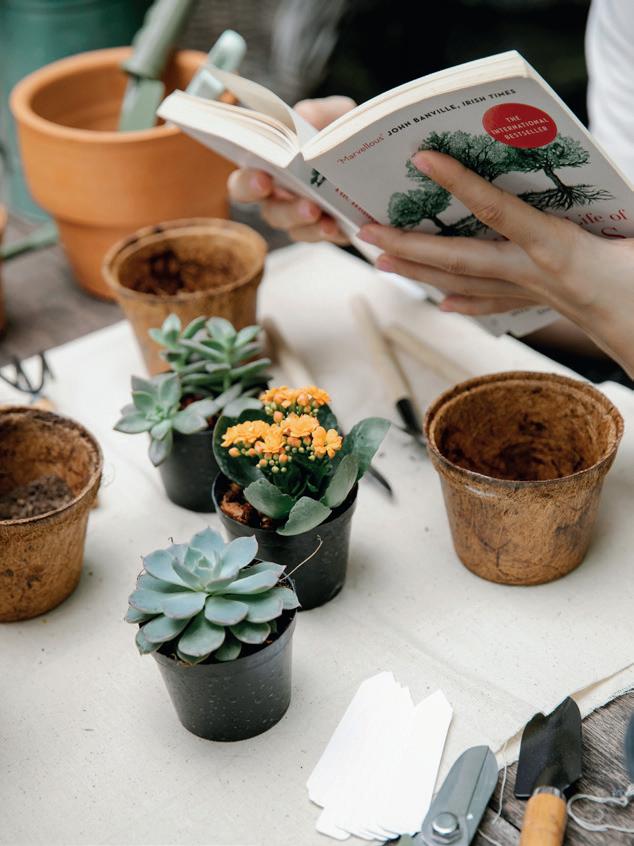 Luciana Bellini
Luciana Bellini
FIRST PERSON » 28

IMAGE: PEXELS/KSENIA CHERNYA/GARY BARNES
The summer I tried… wild swimming

Two sixty-somethings in wetsuits lowered themselves off the bank. ‘You first,’ offered one of them, before giving up on me and calmly easing into the water as if it was an evening bath. I threw off my dress, feeling inadequately prepared in my swimsuit and slipped my toe in. YIKES, it’s burning. Why is my toe burning? It wasn’t actually burning; I just have terrible circulation and the water was that cold. In July. I had to take the leap, push myself in. That was the only way I’d ever do it.
I’m embarrassed to say I lasted all of five minutes before ushering myself out again. The water wasn’t like it was in the Med, and something slippery touched my feet. It was cold: the kind of water that creeps all the way up to your ears and makes you feel almost breathless, slowing your brain, making you think of nothing but sheer blood-racing temperature.
But I was back in moments later. The heatwave was intoxicating and insufferable. The water was an escape.
After a few strokes, I warmed up and began to feel endorphins rushing through my body – one of the many benefits linked
to the wellness craze adored by everyone from the Beckhams to supermodels. Cold water swimming has long been hailed for its holistic properties – noble Romans would gather in circular cold baths to soak in crisp water for hours, while Victorian doctors prescribed cold baths to those suffering bruises and pain.
Fast forward a few centuries and cold-water swimmers are still reaping the wellness benefits, including boosted immunity, improved circulation and
reduced stress due to cold water tackling inflammation in the body.
It’s not just the fact that the water is cold; wild swimming can be a means of bathing, quite literally, in nature.
Every time I came back to the serene spot on Hampshire’s Lymington River during the hot, sticky summer, I’d float among lily pads and take in the shape of the river – all its twists and turns and sudden shallow spots; where the sundappled grassy banks hit the sludgy mud; past crayfish, tufted ducks and their funny little feet; beside moor chicks and meadows.
I watched others who discovered this spot too, swim down as far as they could, disappearing in the brown silty waters. Some lasted as long as I had that first time.
Others took to it instantly, reveling in this little pocket of paradise that, for those of us lucky enough to find it, feels truly away from the madding crowd.
I realised, as I bathed in the shallows, the birds beginning their evening chorus, this was exactly the digital detox that my exhausted body and mind so desperately needed. This year, with a child in tow, I hope we can both find our peace where the wild things are.
30
Annabelle Spranklen
FIRST PERSON »
‘I realised this was exactly the digital detox that my exhausted body and mind so desperately needed’

» IMAGE: PEXELS/RACHEL CLAIRE\JENNY UHLING
The summer I tried… firewalking
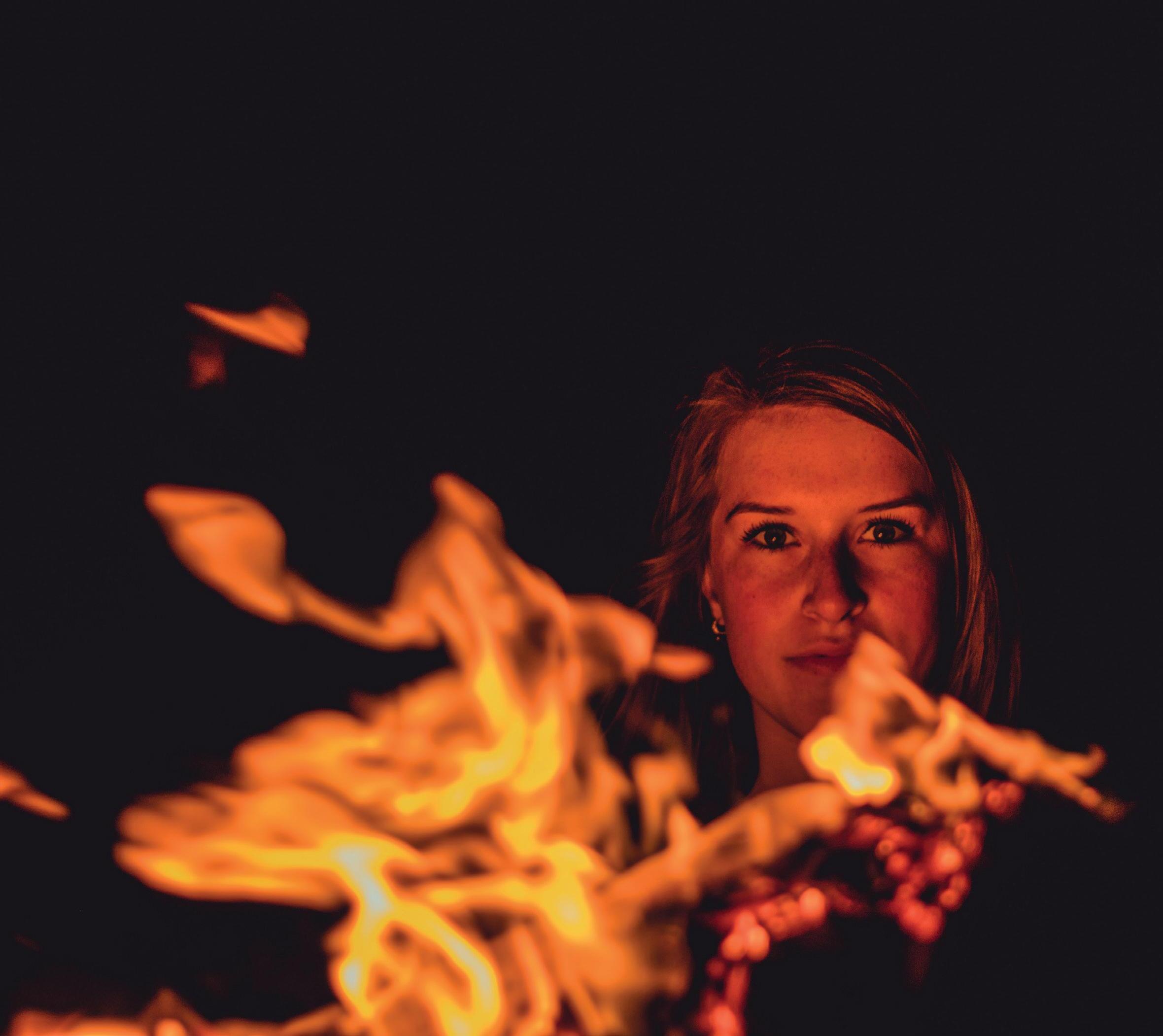 Emma Johnson
Emma Johnson
There is a moment, just before you step onto hot coals, in which the whole world seems to hold its breath. The guiding arm in front of you falls away, and there is nothing stopping you. The path ahead is clear. And although it’s just a small step, it feels impossible.
The heat from the coals is intense. 1,600 degrees Fahrenheit. You feel it searing your skin, your legs, your
trembling hands. You can hear it burning: a crackling hum that stretches into the night. The only light is from the coals. You look down at the glowing red embers and, all around, pressing close, are people holding their breath too; wondering – like you – if this step is truly one you can take.
And then, ahead of you, through the flickering sparks from the fire, stands a man. Chris. He is looking at you, and only you. His whole gaze seems to come from
across the fire and onto your face, white and humbled by the night. This alone is impossible to stand. If you have lived your life trying to be invisible – trying not to count, and trying not to take up too much space – to have all the energy and focus of this moment directed just at you feels entirely alien.
But, you are totally, absolutely there. There is no escaping it. This is a moment for you. You raise you hands to your hips,
32
IMAGES: ROSY@SHINEPND-SUPPORT.COM,UNSPLASH/TOMMY VAN KESSEL
echoing the ‘warrior woman’ stance you practised earlier in the day, in an exercise that you were sure wouldn’t make a difference to your ability to walk on fire. And yet, as you stand, a powerful silhouette staring straight ahead, you feel the possibility rush through you.
‘Are you ready?’ he shouts from across the coals. Eyes up, looking right back at him, meeting his gaze. ‘Yes,’ you shout, in a guttural cry that comes from the very bottom of your soul.
is about finding your way through the fear of what’s ahead, and stepping forward with intention. Feeling the fear and doing it anyway.
‘You will still face crises in your life,’ explained Chris earlier. ‘And the fire is like a mini life crisis. Your fear of it will show up in your body like a crisis. And we will take that fear, that feeling, and we will deal with it. We will walk on the fire anyway. We will show our bodies and minds that there is another way to face adversity.’
Six, maybe seven paces, and you’re across the fire. Chris grabs you in a powerful hold, his hands clasping the tops of your arms, you jumping from foot to foot to kick off stray embers.
‘What is your name?’ he asks. Closing your eyes for a moment, you reach inside for the strength to shout your chosen warrior name. ‘Wild woman,’ you yell into the night, into the crowd, into the fire, into a past in which you told yourself that you didn’t count, that you didn’t deserve all the things you hoped for. Your voice is like nothing you’ve heard before: strong, loud, cracking with emotion, pinched with pain, wobbly with courage. ‘Walk,’ he commands. And there is nothing between you and the fire now. You step out, never taking your eyes off this person in front of you. Underfoot, the coals are like boiling rubble underfoot. It is a powerful feeling, but you are more powerful. With each step, the fire intensifies, but so does your strength. And here, in this moment, I understand what firewalking can do. There’s no magic, no technique, no voodoo. It
‘Yes,’ he says quietly. ‘Yes.’ And you are dancing away from the fire – a smile writ large across your face, tears swirling in your eyes. You are bursting with possibility now, power surging through you, strength fizzing in your fingertips, courage coursing through your veins. Giddy with knowledge. Warrior. Firewalker. Woman.

If there is a big secret to walking on fire, it’s this: there is no secret. If you walk quickly enough, with intention and focus, if you don’t wobble, you don’t get burned. If you focus on that warm, generous face on the other side of the coals, if you just step forward and keep going, you can walk on hot coals and come away unscathed. You realise that the worst thing was the fear, not the walk. Because the biggest thing to fear in life is fear itself.

Later that night, you will find the only mark left from the fire, a crescent-shaped fire kiss, curled on the sole of your left foot. But otherwise, your feet are unscathed. You are not burnt. You are not in pain. You are simply alive, truly present and right here.

33 FIRST PERSON
‘Your voice is like nothing you’ve heard before: strong, loud, pinched with pain, wobbly with courage’


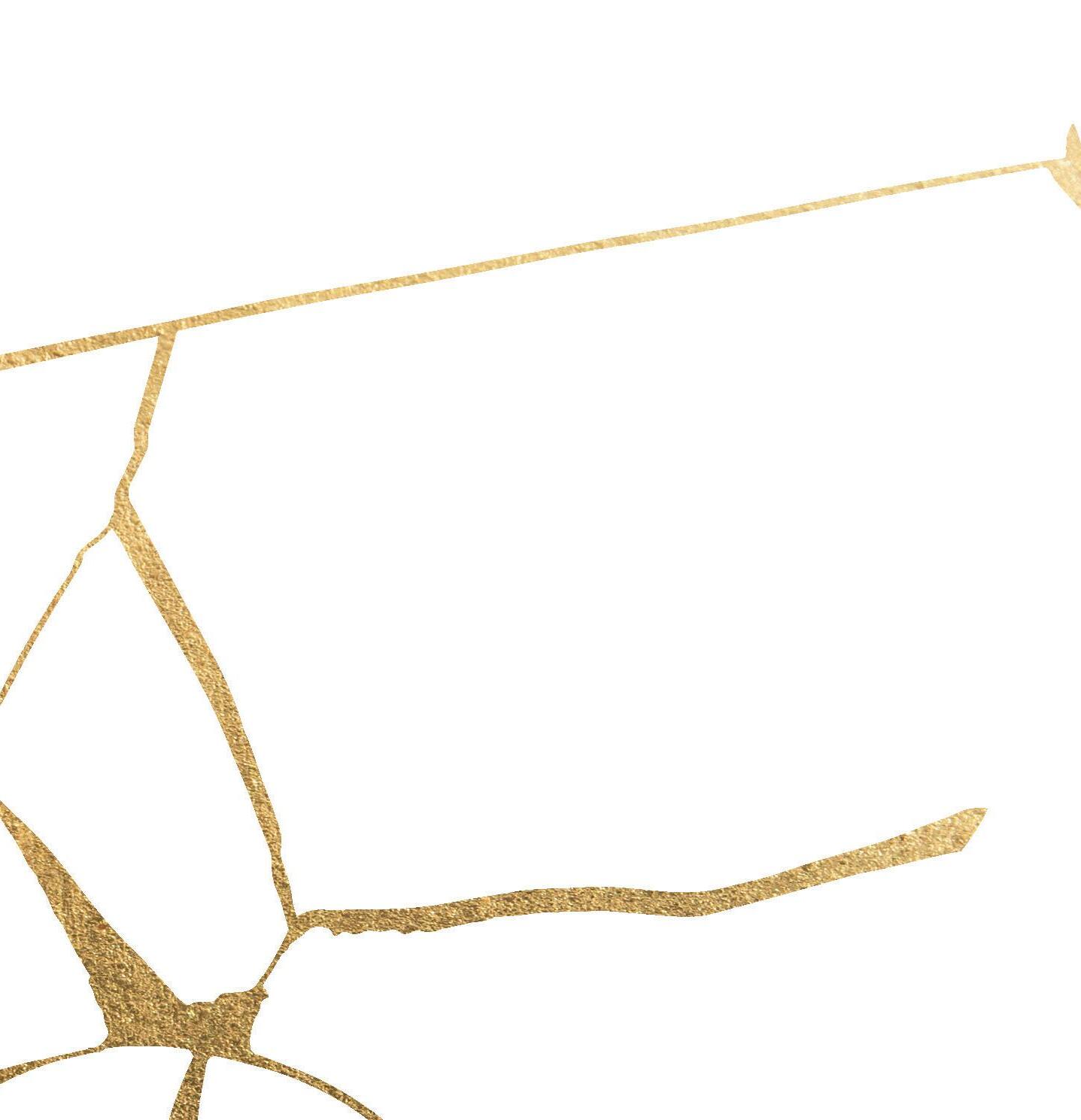
‘If it could only be like this always – always summer, always alone, the fruit always ripe.’
IMAGE: UNSPLASH/GEORGIA DE LOTZ
Evelyn Waugh
LIVING LIFE IN

Understanding your relationship to colours and how they make you feel can provide
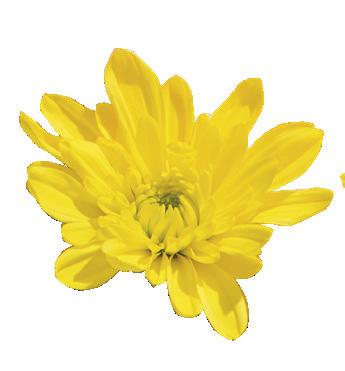




VIBRANT COLOUR



powerful insight into ways to uplift, empower and transform your life, says Nicola Chantler







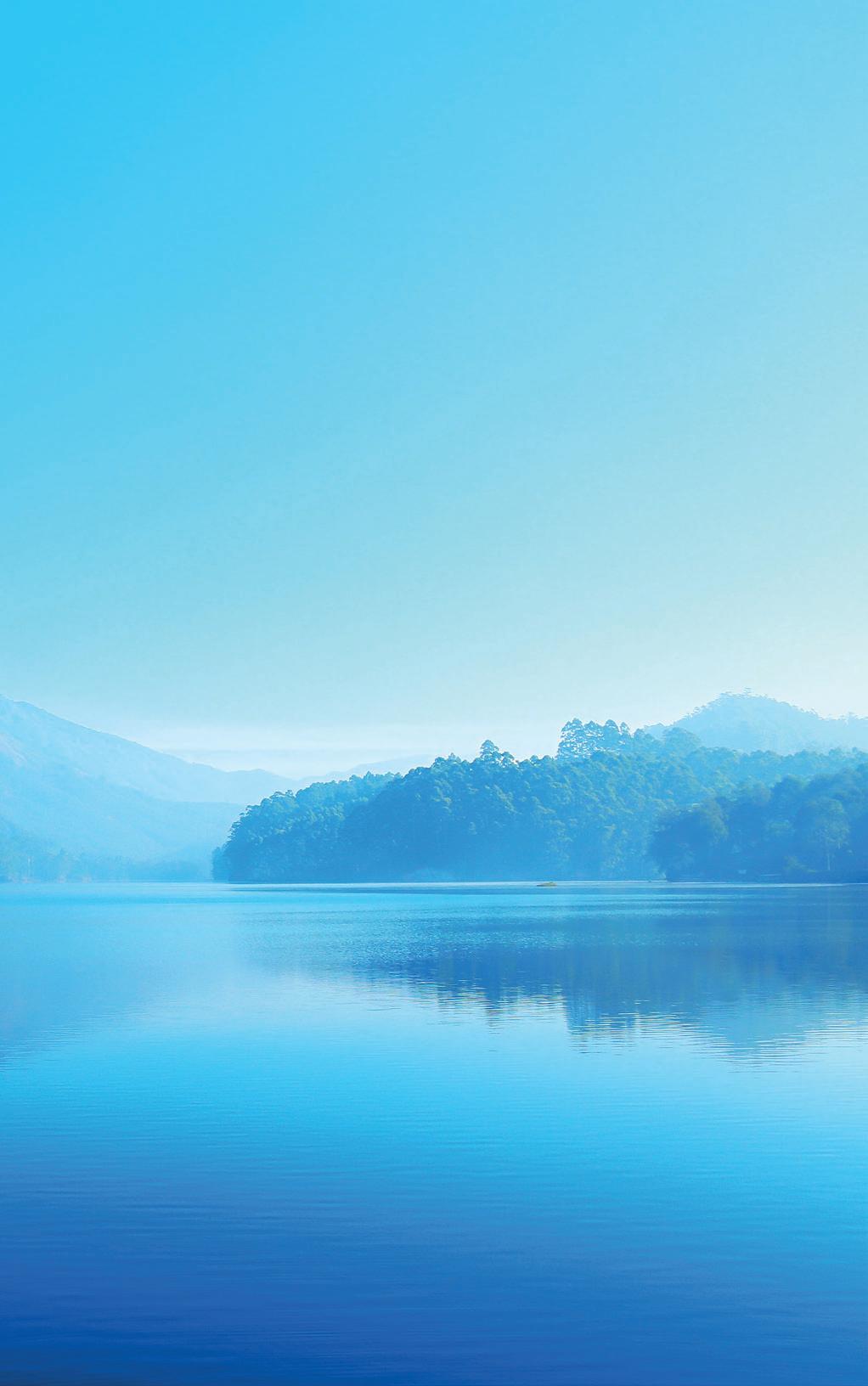
SELF
Our world is awash with colour. From the moment we open our eyes, we are exposed to a rainbow spectrum that encompasses light and dark, warmth and cool, shade and tone. But far from being purely aesthetic, colours boast a surprising ability to impact our moods, emotions and sense of identity.
‘Colour can have an impact on our mood and wellbeing, and influence our emotions, how we feel, and even how we behave,’ says Lee Chambers, an environmental psychologist and wellbeing specialist.


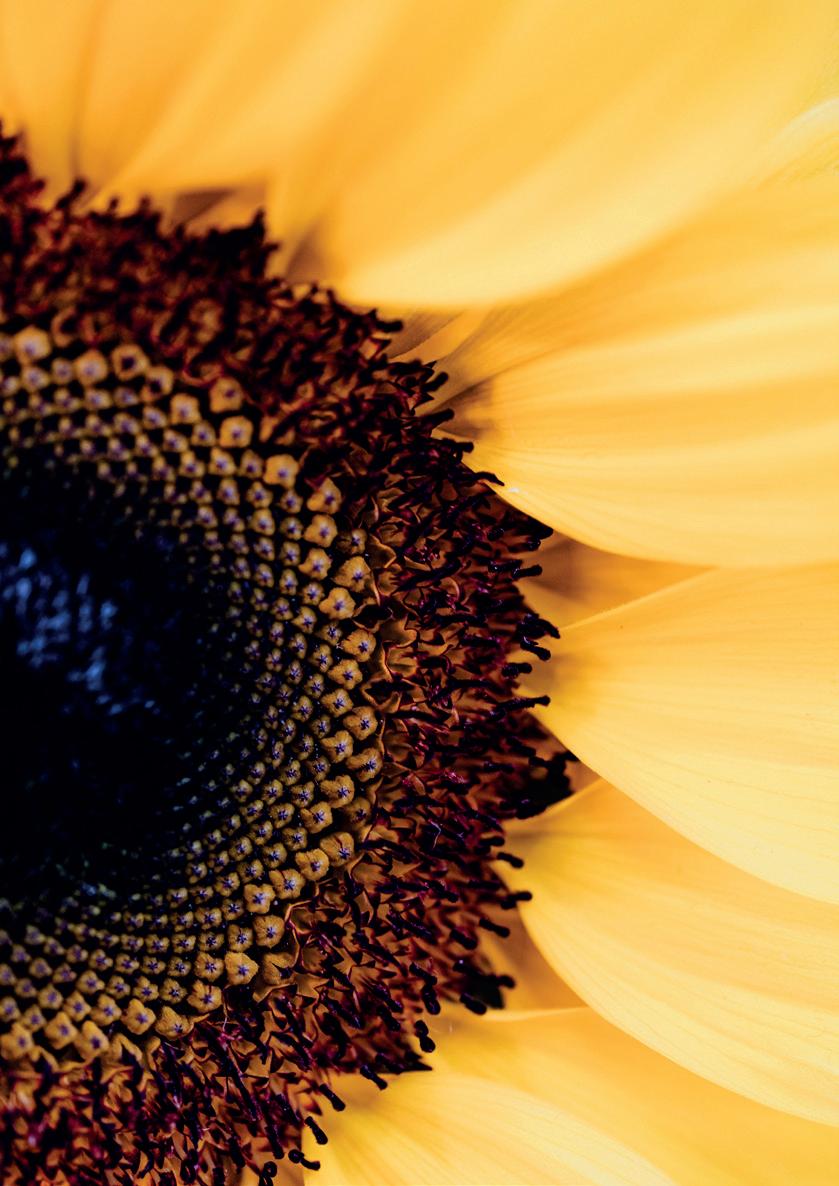
‘Different colours can evoke physiological and psychological responses, changing our state in the present. They can also impact us from a symbolic perspective: certain colours [carry] meanings and emotions culturally, [and we might associate] colours [with] memories and feelings.’

Our moods are impacted by our surroundings. To create calm, we might feel drawn to uncomplicated, neutral spaces. To help conversation flow, we might wear vibrant hues or spend time in colourful surroundings to encourage openness and authenticity.
‘Calming, cooler colours that we often find in nature are more likely to ground us and have us feeling at ease,’ Chambers explains.
‘Sky and sea blues, forest greens and earthy browns work well, as do softer purples and warm beiges. And when it comes to promoting communication and social connection, warmer vibrant colours tend to get people energised and
38
‘Colours boast a surprising ability to impact our moods, emotions and sense of identity’
PREVIOUS PAGE AND THIS PAGE IMAGES: PEXELS
talking. Red and orange are a great place to start. Having them as a pop of colour in a space can incite that spark, and wearing them as a colour is always a talking point, draws people to you and pulls attention.’
This significance of colour is not a new discovery. In ancient yoga tradition, chakras are coloured to depict each of the different energy centres and the meanings behind them. The colours help yogis to visually connect with this subtle body energy, as they work to bring balance. They might meditate on a chakra’s specific colour; visualise their breath making a colourful path around their body, or wear the shade of the chakra with which they are working.
Pantone unveils a ‘colour of the year’ each year, as a way ‘to draw attention to the relationship between culture and colour’. In India, they celebrate ‘Holi’, or the ‘festival of colours,’ as a way to spread love and positivity.

Even artists have long used their palettes as a means to convey emotions and memories, giving art-lovers an intimate insight into their inspiration and personal lives (think Picasso’s ‘Blue Period’). In the multi-million pound interior design industry, extensive research goes into colour and design choices for shops, restaurants and hotels, to ensure a particular ‘mood’ is created on arrival.
Whether we realise it or not, we tap into the power of colour daily. From the colours we put on our plates, to how we decorate our homes, to how we dress for an important business meeting – each choice is impacted by our relationship to colours.
A flash of red lipstick might boost our confidence, while immersing ourselves in nature’s colourful balm can renew our feeling of connection with ourselves and the world around us.
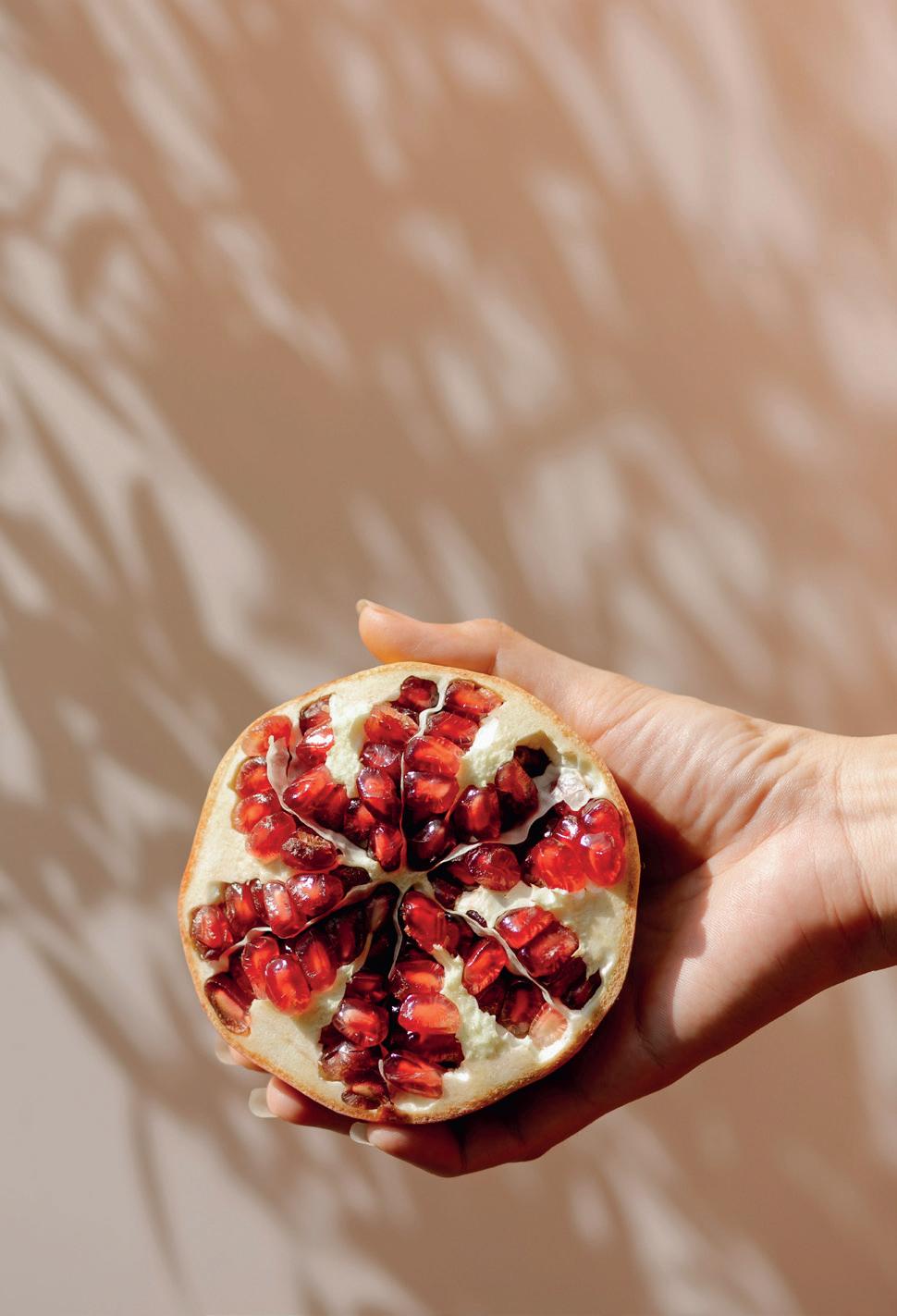
The hues we are attracted to can feel instinctual. But their roots go deeper. Our favourite colours are

39
COLOUR
impacted by a multitude of experiences: upbringing, lifestyle, gender, environment. Memories of days by the sea with loved ones might mean blue tones make us feel calm and safe. Reds could evoke feelings of passion and determination, owing to strong relationships in which our self-confidence has blossomed.
So how do we identify the colours that we align with, and use them to make positive change in our lives?
‘When it comes to utilising colour to empower us, we have to first consider our own colour associations and preferences,’ Chambers says. ‘These can be individual and play a role in how we best use them to our advantage.
‘[Consider which] colours we express ourselves in through clothing. [This] can impact how we feel about ourselves and the message we project to the world around us.
‘We can also bring colour to our environments – from paint and decorations to ornaments and plants – to create positive, uplifting spaces that express our character and make us feel like we belong.’
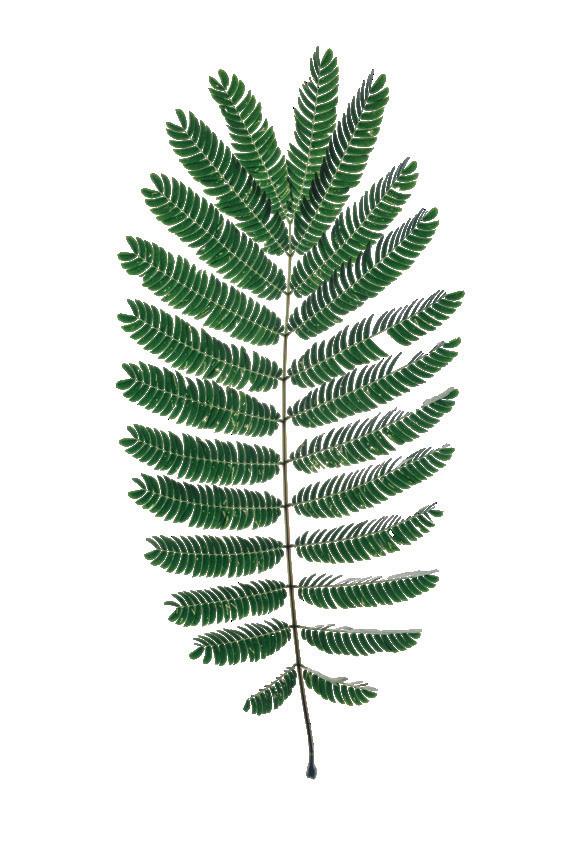

This positive language of colour can add a creative twist to our self-care rituals too, providing ways to deepen our practice and inner connection. You might use your favourite hues to journal your morning thoughts, or in your meditation and visualisation practice.
In our own exploration, we might discover certain colours lift our moods; some balance our energies, while others ignite our passions and sense of togetherness.

40
IMAGES: PEXELS.
‘Memories of days by the sea with loved ones might mean blue tones make us feel calm and safe’
5 ways to bring the power of colour into each day

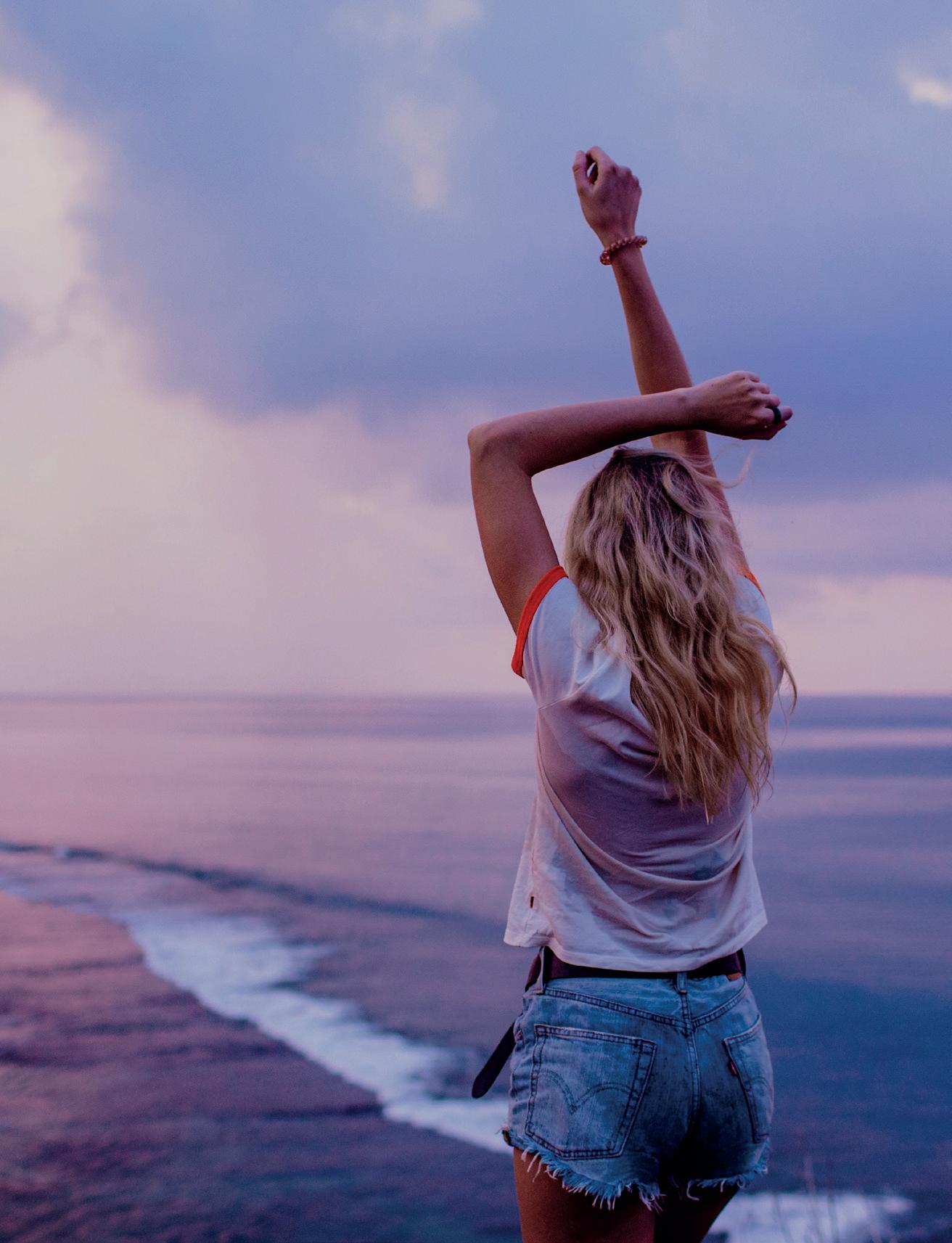
1
Spark your creativity in uplifting environments. Brighter colours such as yellows and oranges can be confidence-boosting. Help the creative juices flow by spending time outside on a sunny day, or working in light spaces to free up mental blocks.
2
Choose your wardrobe to suit your mood. Whatever the weather, you might lighten your mood by wearing one of your favourite fashion brights, using a colourful lipstick or adding a vibrant accessory.
3
Express your emotions in colourful journal entries. Using coloured pens for your morning pages can be a helpful way to express yourself. Pay attention to the colours you use as you journal particular thoughts and feelings.
4
Meditate using colour. Associations with the chakra system can help you tune into your feelings and areas of imbalance. Meditating on the colour red in the space of the pelvis, for example, could bring a feeling of being grounded and secure as you sense the root chakra. Focusing on blues in the area of the throat can open our powers of communication.

5
Use colour to lift others. Colourful gifts can be a thoughtful way to spread positivity. You might opt for vibrant flowers or candles, to help share love and happiness with another.
41 COLOUR
SHADES OF PERFECTION
From building the perfect capsule wardrobe to creating the perfect first impression, the art of armocromia – or ‘getting our colours done’ – has tangible benefits for our busy lives. But where do we start? Luciana Bellini meets industry expert Linda Mattolini to explore what it’s all about
If you thought ‘getting your colours done’ was something that only happened in the 1970s, think again. While it’s likely you first came across the term back in that era, when the trend was at the peak of its popularity, the fashion movement has had a resurgence of late, with more and more women looking to harness its power to transform their personal and professional wardrobes. But what exactly does the process entail? How does it work? And how can you use it to your advantage?
The person you need to see to answer all these questions is Linda Mattolini, the most in-demand image consultant in Florence. Mattolini has worked in the fashion industry for the past twenty five years, as a stylist and visual merchandiser for luxury brands including Gucci, Yves Saint Laurent and Burberry. Seven years ago, she retrained at the prestigious Italian Image Institute and now spends her days working with brands and private clients; advising them on everything from the best clothing, makeup and hairstyles to suit their body and face shapes, to the art of armocromia – the official term for ‘getting your colours done’.
Armocromia, otherwise known as seasonal colour analysis, is the method of identifying the best hues

to suit a person’s natural colouring. Born in America in the 1930s with the advent of colour cinema, it rose to popularity in the seventies, when the seminal book Colour Me a Season was released. Now it’s having something of a moment again, particularly in Europe, where women of all ages are realising its potential to change not only their wardrobes, but their whole outlook on their appearance.
‘Armocromia came to Italy around fifteen years ago, so it’s still fairly new for us and it’s very popular right now,’ explains Mattolini, whose clients mainly come to her for armocromia consultations. She sees women from all over Florence and beyond – some fly in just for a session with her – to help them transform their image.
So, what exactly does an armocromia session with Mattolini involve? Each oneon-one consultation lasts for an hour and a half, during which time you will discover which of the four seasons you fall under: spring, summer, autumn or winter. These seasons are then divided into two groups, cool and warm, which refer to the undertones in the colours. Those who are winter or summer are in
42 INTERVIEW
IMAGE: PEXELS/JONATHON BORBA
»
‘The aim is for you to be in perfect harmony with the colours, not for the colours you’re wearing to be the star of the show rather than you’

43
the cool category, while autumn and spring’s colours are warm. ‘Understanding the temperature in your undertones is the first step in armocromia,’ explains Mattolini. ‘If you’re warm, your best colours will be anything with yellow in them, such as oranges, beige and browns. For those who have cold undertones, it’s more about the percentage of blue, so all shades of blue, purple and lilac will suit you best.’
During the session, Mattolini works by holding up a series of drapes around your face – which must be completely makeup-free and with your hair covered, to see your natural skin tone as clearly as possible – to test which ones complement you best. ‘When you find the right colours, the skin appears more relaxed and looks brighter, while any redness or wrinkles are softened,’ says Mattolini. ‘In contrast, any “enemy colours” that are held up around the face will have the opposite effect.’
To demonstrate during our Zoom call, Mattolini holds a variety of drapes against her face. She explains that she’s a summer – and, when we speak, she’s wearing a crisp baby-blue shirt that perfectly complements her colouring. Light makeup makes her complexion glow. She explains that, as a summer, soft, pastel colours suit her best, while her skin isn’t happy with anything too bright. Picking up the drapes, she holds a pastel pink against her face, followed by a dark, deep red. The difference between the two is stark, with the darker colour immediately washing her out and making her look more tired.
Mattolini doesn’t offer her sessions online, because, to get a truly accurate reading, you need to be face-to-face. But I can see the immediate impact of armocromia with just a couple of examples over Zoom. ‘The aim is for you to be in perfect harmony with the colours,’ she says, ‘not for the colours you’re wearing to be the star of the show rather than you.’
She sees women of all ages and from all walks of life, though she says it’s not possible to get a full armocromia reading before the client is at least sixteen years old, as our skin and hair is still changing before that age. Once you have your palette, though, it
stays the same for the rest of your life, arming you with the tools to know which colours will suit you best and which inherently go together. ‘You can use it for every occasion and every moment, throughout your entire life,’ says Mattolini. After the session, you’re sent home with a special report that reveals your palette, as well as the best colours for your makeup and hair. Mattolini says dying your hair won’t affect your palette – ‘The skin is the most important factor’ – but she does caution about experimenting too much with hair colours that don’t fall within your palette: ‘If you’re a winter, for example, and your skin prefers dark, cool colours and you dye your hair red, it’s going to be a bit of a disaster.’
Armocromia is a fashion practice that makes a lot of sense in today’s world, where we’re all trying to use our time more efficiently and make more mindful, impactful purchases. Armed with your palette, shopping becomes a breeze as you immediately know which colours will suit you and, crucially, which ones won’t – which means you’ll never again buy something that ends up languishing in your wardrobe for years, never to see the light of day. It has the added benefit of allowing you to make more sustainable choices naturally, as shopping within your palette means you only buy pieces that go together, instantly creating your polished capsule wardrobe that will never go out of style.
It’s clear that Mattolini gets a lot of joy and satisfaction out of her job. When I ask about her favourite aspect of the work, she finds it hard to narrow it down to just one thing. ‘I love it because a lot of women, when they first come to me, are afraid to change. But then a month later they’ll send me a photo saying, “Oh Linda, I tried this and I never thought I could.” And I’ll be like, “Wow! Is that my client?”
‘Discovering their palette helps with their happiness, their confidence, their self-esteem. They become a completely new person. That’s the part of my work I really enjoy, because I get to help someone. I get to participate in their life.’

44
‘Shopping within your palette means you’ll only buy pieces that go together, instantly creating your own polished capsule wardrobe that will never go out of style’

45 INTERVIEW


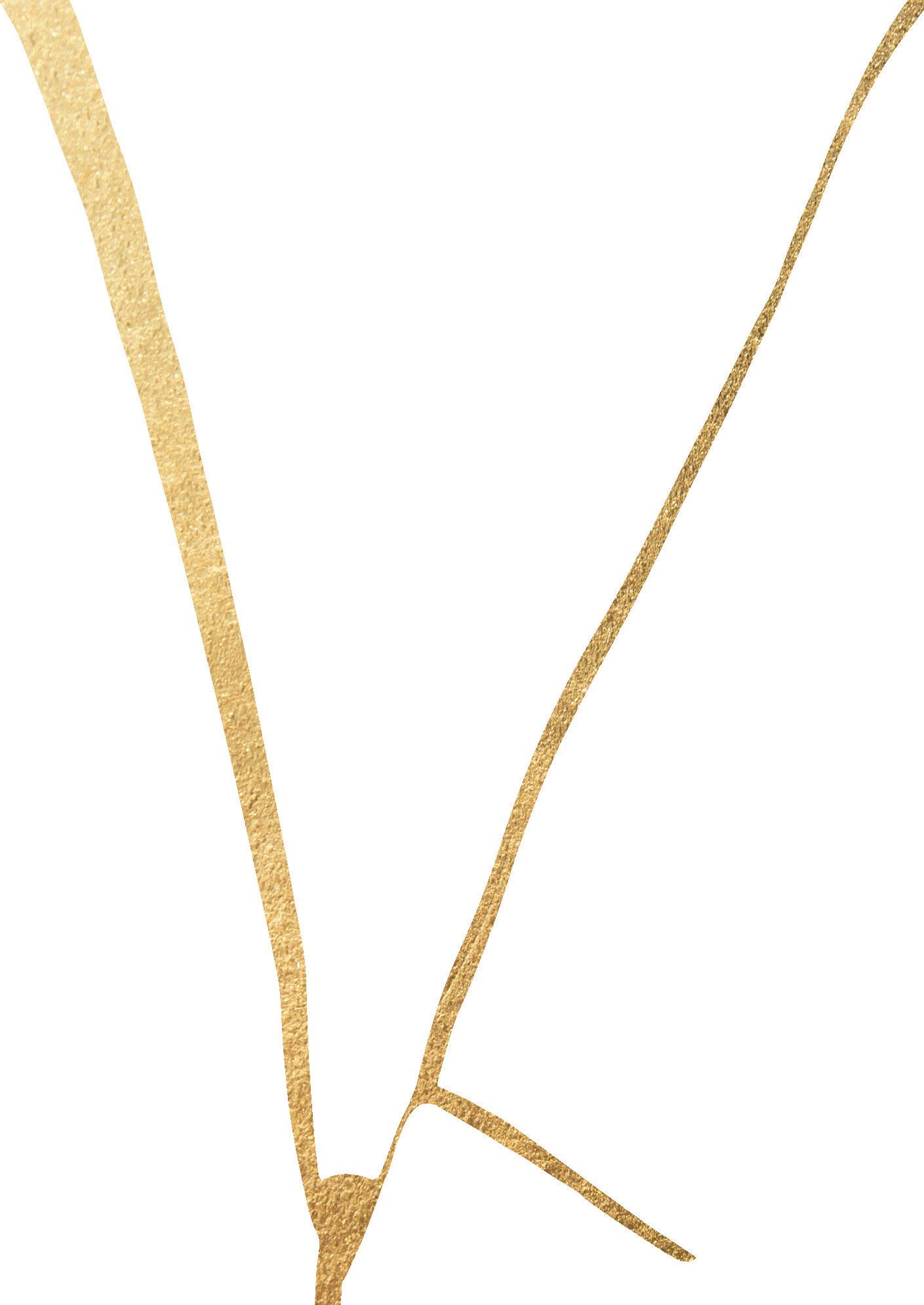
IMAGE: PEXELS/ MARKUS SPISKE
‘If the foot of the trees were not tied to the earth, they would be pursuing me. For I have blossomed so much, I am the envy of the gardens.’
Rumi
A sense of wonder
Have we forgotten how to marvel at the smallest, simplest things? Emma Johnson considers how we can rekindle our relationship with wonder
The tiny spider crawling across the back of the chair in my garden is so small I have to take my glasses off to see her up close. She has brown legs and a dark blonde body, with smudgy black markings. One of her front legs looks a bit crooked. Maybe she’s hurt it, or maybe she’s just going slow, and anyway eight legs is a lot to keep track of. She stops for a moment. The fabric on the chair is a rough blue weave that looks chunky and almost hilly compared to her tiny size. She must feel as if she’s walking across undulating ground, such are the endless peaks and troughs of machine-stitched cotton to navigate. She must be exhausted. A small beam of morning sunlight breaks through the canopy of the place I’m sitting. For a moment it illuminates the spider, who seems to scrunch lower on the cushion, before suddenly changing direction and hurling herself off the back of the chair, a gossamer-thin strand of webbing flying out behind her. She twirls and falls and floats and flies, her legs gracefully fanning out around her as she surrenders to gravity. I watch her spinning body, the way she slows and speeds up again, sometimes caught by the smallest breath of wind. But there is no fear: she’s just falling, as she has always done. It looks fun, playful, free. Such a joyful, wonderous way to journey through life. She settles on the chair leg, making contact with solid ground again. And then she is gone, sneaking over the edge of the chair and off to new adventures.
48 WONDER
»

‘Observe the wonders as they occur around you,’ said Rumi, more than eight hundred years ago. ‘Don’t claim them. Feel the artistry moving through and be silent.’ Did he too wonder at the steady march and magic of a tiny spider? Was life slower then? Did simple things feel more extraordinary?

‘If there were a spirit of this age, it would look a lot like fear,’ says Katherine May in her book Enchantment: Reawakening Wonder in an Exhausted Age. ‘We are in the business of running now. It is all so urgent. Every year, it seems, we must run harder.’
And yet, every year, nature circles through an incredible display of creation and life, blooming and expansion, then surrender, decay, death and rebirth. Green shoots poke through frosty soil; birds lay eggs in nests of twigs, perched impossibly high in the swaying branches of trees; hedgehogs wake from a sleep that has lasted months to waddle across the garden looking for worms.
Peonies unfurl to reveal layers of colour, acer trees turn blistering red, spiderwebs hang in corners, glistening with morning dew; bees feast on lavender and produce sweet, sticky honey.
We live amid this wonder all the time. But we don’t see it. We rush by as we are late for the train; we brush past the flowers as we reply to an email on-the-go; we turn on lights in the dark so we blot out the stars. We marvel at discounts and good deals, at celebrity weight loss and new technology. We buy cushions and caviar. We drink and eat and consume our way through life.
And, in doing so, we miss so much.
‘We sense a kind of absence,’ says May. ‘I increasingly feel a part of me is missing… It’s not just the world that needs to change, I need to change too… The subtle magic of the world offers comfort, but I don’t know how to receive it.’

In her book, May considers how finding our sense of wonder and enchantment again can help us return to ourselves, to the deep intuitive sense of knowing what we have lost. ‘Enchantment is small wonder magnified through meaning, fascination caught in the web of fable and memory. It relies on small doses of awe… It is the sense that we are joined together with the elements… It is the ability to sense magic in the every day, to channel it through our minds and bodies, to be sustained by it.’
For May, enchantment is the medicine that will heal our exhausted souls; wonder the salve that will soothe our sense of despair. And it’s no accident that she, and others, have focused on the power of nature and folklore to awaken this dormant sensation of being in the presence of ordinary magic.
‘Enchantment, by my definition, has nothing to do with fantasy, or escapism, or magical thinking,’ writes Sharon Blackie in her vital book The Enchanted Life: Unlocking the Magic of the Everyday. ‘It is founded on a vivid sense of belongingness to a rich and many-layered world; a profound and whole-hearted participation in the adventure of life.’
Blackie’s book is a clarion call to our sense of wonder, asking that we start
50
WONDER
to slow down enough to see the little things that surround us, and to engage with everyday magic and mystery. ‘The enchanted life understands the myths we live by; thrives on poetry, song and dance. It loves the folkloric, the handcrafted, the practice of traditional skills. It respects wild things, recognises the wisdom of the crow, seeks out the medicine of plants. It rummages and roots on the wild edges, but comes home to an enchanted home and garden. It is engaged with the small, the local, the ethical; enchanted living is slow living.’
It is also, as she reminds us, about connecting with the memory of what it was like to be children” delighted by tiny things, fascinated by the turning of a wheel on a tractor, the buzz of a bee, colour of a ball. ‘The enchanted life,’ Blackie writes, ‘flourishes on work that has heart and meaning; it respects the instinctive knowledge and playfulness of children.’
If you have ever gone for a walk with a toddler, you’ll know how slow and repetitive it is. Toddlers don’t walk in straight lines. They turn back, and round.

»
‘Observe the wonders as they occur around you. Don’t claim them. Feel the artistry moving through and be silent’ RUMI
Enchantment is small wonder magnified through meaning, fascination caught in the web of fable and memory. It relies on small doses of awe’

52
KATHERINE MAY ALL IMAGES: PEXELS/ALLAN MAS
They crouch down. They find beetles in the grass and spot tiny little planes in the sky, and marvel over and over again at their ability to jump on and off a tree stump. They are not busy, they are not late, they do not need to do anything or be anywhere. They are deeply mindful and intentional in the way they engage with the world around them. They are full of wonder and enchantment for all the things they see and touch and hear and feel.
‘Enchantment came so easily to me as a child, but I wrongly thought it was small, parochial, a shameful thing to be put away in the rush towards adulthood,’ writes May. ‘It turns out it had nothing to do with beauty at all… It came from a deep engagement with the world around me… the sense of contact that comes from noticing.’
Sometimes, to shift our blocked energy, the stagnant ennui that floods our lives, we need to change the way we engage with the world by simply stopping long enough to notice things, to make a conscious effort to be in the noticing. ‘This is what human beings bring to the world – the ability to take notice,’ says Kathleen Dean Moore in her beautiful book Wild Comfort: The Solace of Nature. ‘To be grateful and glad, glad for the river swinging by, for the sun warming my shoulders, for the breeze lifting the hairs on a butterfly’s back.’
Moore’s book was written as a response to the deaths of close friends and family members in quick succession. Her world suddenly shaky and fearful, she sought the lessons of nature and the world around her for solace.

In one chapter she recalls the simple beauty she found in a beachside bar with her husband and children, marvelling at the effect of the fading sunlight on a bottle of chilli, a flickering candle and a glass of something delicious. Over two pages she describes the ‘glow of light through the liquid, the shine of the waiter’s glass’. She evokes the colours of the bottles and sunset, ‘flaring red against chipotle pepper sauce… blue fire, sand on fire, red sun fire becomes green fruits… again the sparks – matter and energy dancing in the dark’.
It is so simple, and yet this description perfectly captures the wonder of an ordinary moment. ‘Have I never seen candlelight before, or a bottle of chilli sauce?’ she asks. ‘Something has snapped the bonds of the familiar… Is candlelight caught in a bottle any less [than] the star-rimmed edge of an angel’s wing? The glass in the bottle is sand, fused by fire into something that still glitters. And what is sand? – black urchin spines, fallen stars, unimaginable time.’
Standing in our stillness and seeing the familiar anew is very powerful. If you look out of a train window as the world rushes past, you see nothing. The world becomes a blur of colour and nothing more. But if you stand still wherever you are, what do you start to see? You don’t need a beautiful garden, a stunning vista or a sublime meadow filled with wild flowers. You just have to start looking.
‘To be worthy of the astonishing world,’ Moore writes, ‘a sense of wonder will be a way of life, in every place and time, no matter how familiar: to listen in the dark of every night, to praise the mystery of every returning day, to be astonished again and again, to be grateful with an intensity that cannot be distinguished from joy.’
WONDER

‘With an eye made quiet by the power of harmony, and the deep power of joy, we see into the life of things.’
IMAGE: UNSPLASH/ JARED RICE
William Wordsworth


FREE SPIRITS

Summers on the cusp of adulthood can be a carefree, joyful exploration of the world and our own selves. How, asks Annabel Harrison , can we recapture that feeling in later years?

Youth is the celebration of life, youth is the spirit of discovery.’ These words by Himalayan sonneteer Abhijit Naskar ring true as I recall my late teens and twenties. Hazy, lazy, long summers with the best of friends and new best friends – the kind you meet at a beach bar, spend an evening with, putting the world to rights over sunset cocktails, and, a day later, find yourself on a bus with, continuing across Mexico.
I celebrated life in all its glory, from flitting between the sand-fringed islands of Thailand – a cliched gap year rite of passage, but what a summer – to dancing at the famously freeing, soul-nourishing Glastonbury festival. My memories are crowded with people I met, places I intended to visit (and »
WELLBEING
accidentally discovered), new modes of transport, daring activities – like whitewater rafting in Australia – and plans that changed at the drop of a hat; something that did a then-perfectionist like me a great deal of good.
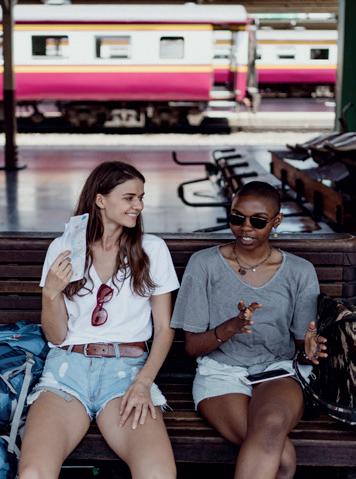



A cloak of responsibility was yet to descend, and I was absolutely immersed in Naskar’s ‘spirit of discovery’. At the time I’d have said this was entirely geographical but I now realise I learned a great deal more than the quirks of a new city. That friend I idolised? I was seeing her through the rose-tinted lens of youth – she is amazing but not immortal. The way I spent the money I had saved for my travels? I’m glad I did but I wouldn’t now.
As life rolls on, it does become more predictable, with other people’s wants and needs often taking precedence over our own. I’m lucky to have a bank of memories from boundless, brilliant summers that taught me many lessons I was oblivious to at the time. But I’d say no if offered the chance to repeat my twenties. Would many, if any, of us want to revisit the emotional turbulence of first jobs and first redundancies, first loves and first heartbreaks, navigating flat-shares and frenemies?
The unscheduled freedom of youth usually becomes less accessible in one’s thirties, forties and beyond – often due to careers, children, ageing parents or all of the above. But it’s still possible to recapture that carefree feeling. It just might have to be less spontaneous. I say yes to any nuptials I’m invited to, because one of the things I love most (and have fewest opportunities to do) is dancing for hours to a wedding band. I book that must-see play or gig the moment I see
it advertised so I don’t have time to come up with reasons why I can’t go. I’m proactive with new friends walking the same path as me – mostly those with children who will be at the same school for the next fifteen years – and I cherish (yes, you can cherish via WhatsApp) old friends more than ever.
In fact, these relationships play a key part in happiness as we get older. Author and GP Dr Rangan Chatterjee, on a mission to improve the nation’s health and happiness, cites spending time with friends as more important than we might think. It is a key component in reducing stress and loneliness, and he urges us all to commit regularly to activities with friends. Redefining a successful week can also impact our feelings. ‘Happiness habits’, Chatterjee believes, are very helpful in this respect: ‘Write down three things that give you an intense feeling of wellbeing. See if you can do them all each week. For example, a successful week for you might include a walk, an Epsom salt bath and three meals at the table with your family. Or it might be spending time with a close friend, time to play your guitar and lunch with your mum. Your happiness habits will be unique to you.’
I’m making room for ‘happiness habits’ that look quite different from those of my youth but give me selfworth, energy, creative expression and satisfaction in new ways: running, making time to hop off the chore conveyor belt and be silly with my children, saying ‘yes’ to all social events with the university ‘girls’ – now very much women – and writing a book. ‘Anyone who stops learning is old, whether at twenty or eighty,’ mused Henry Ford. ‘Anyone who keeps learning stays young. The greatest thing in life is to keep your mind young.’
58 WELLBEING
‘Anyone who keeps learning stays young’ HENRY FORD

IMAGES: PEXELS/BEN MACK/ARTEM YELLOW/KETUT SUBIYANTO/LINA KIVAKA
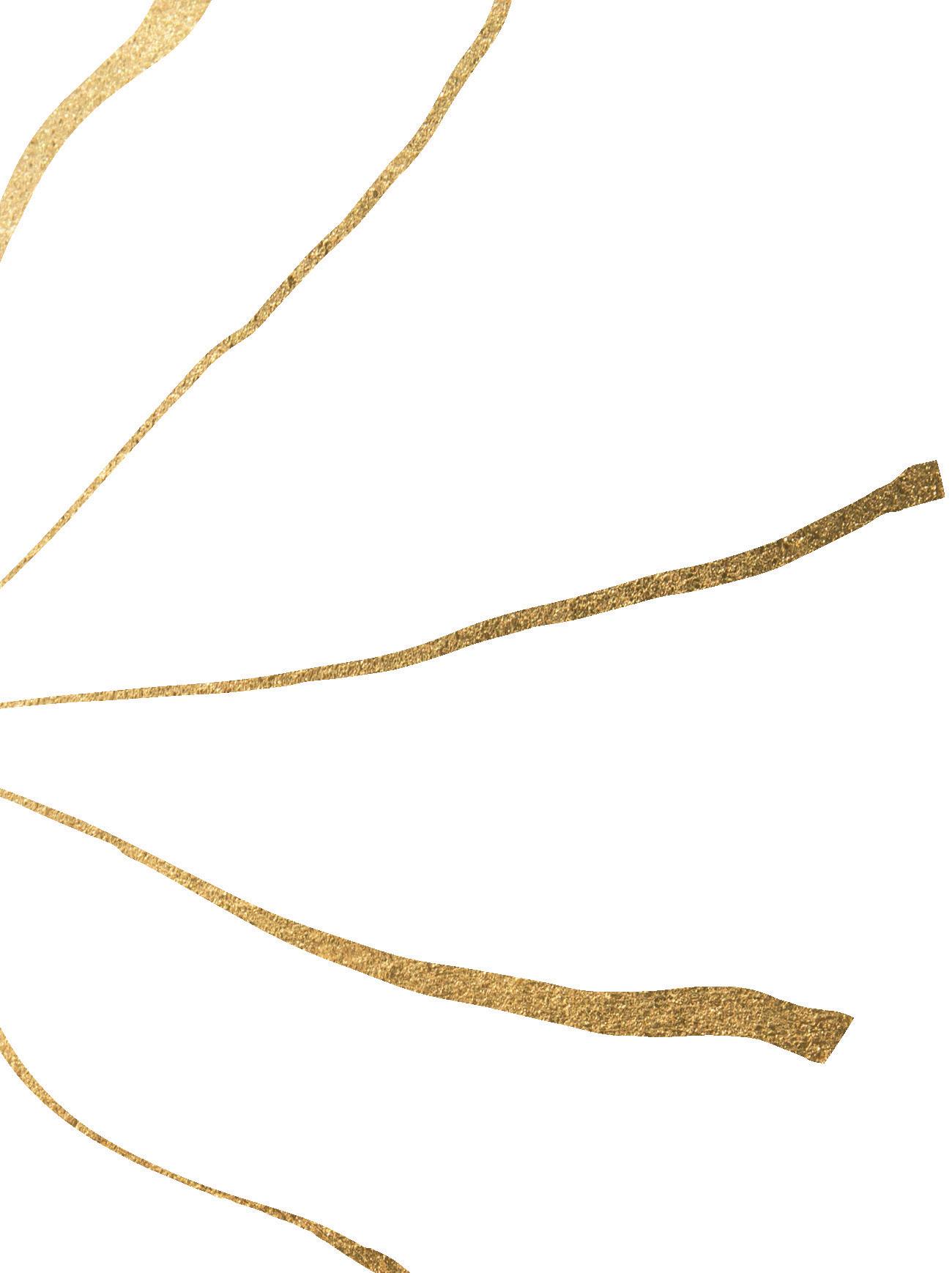
‘To see a world in a grain of sand and a heaven in a wild flower, hold infinity in the palm of your hand and eternity in an hour.’
IMAGE: UNSPLASH/CELINE DRUGUET
William Blake


Generosity
the heart is good for
How does giving to others work wonders for our hearts and minds? Katie Scott explores the relationship between generosity and wellbeing
My friend pauses while she thinks. She has been working for charities for decades and I want to know why she believes people give. ‘The philanthropists I work with have often worked hard all their lives, made money and now want to give back to society,’ she says. ‘Some have sold their businesses and want to find a new sense of purpose in their lives and to redefine their identity. Other people are driven by their values and are perhaps critically aware of inequality in the world, while others are seeking status.” She adds that some of the most generous people she has worked with give anonymously, and that a sense of satisfaction is a motivating factor for nearly everyone.
Being generous makes us happy. Neuroscientists in Switzerland have visually captured the interplay of brain regions. They used functional magnetic resonance imaging to record what was happening in the brains of participants when they made a public pledge. The results confirmed the link between generosity and happiness.
Other studies proved that being generous causes the brain to secrete chemicals including serotonin, which regulates our moods, oxytocin, which boosts our sense of connection with others, and dopamine – the pleasure chemical. These are all “happy” hormones.
62 GIVING
» IMAGE: UNSPLASH/ TETIANA SHADRINA

Positive psychology coach Roz Colthart says generosity changes our view of ourselves: ‘You begin to view yourself as an altruistic and compassionate person, which can promote a sense of confidence, optimism and usefulness. This improves a sense of meaningfulness and value in your life.’
And generosity deepens your relationships with others. ‘It leads people to like you, appreciate you and create a better sense of connection,’ Colthart suggests. It can also be a distraction from woes in our own lives as we focus instead of others.
In stark contrast, feeling the need to be guarded with anything – your time, your love and material possessions – makes you feel bad. It lowers your emotional frequency by making you feel stingy, disconnected and guilty. This can spike our stress hormone, cortisol.
The emotional impact, as is often the way, is mirrored by a physical impact. The University of Buffalo carried out a study of 846 participants over five years and discovered a connection between how much people helped others and a decreased mortality risk. Another team – whose work was reported in Greater Good magazine – honed in on blood pressure. The scientists measured the impact of giving money to others, and found that the biggest spenders had the lowest blood pressure. Generosity is good for your soul and good for your heart.
These studies looked at financial generosity and small actions that make others feel good. All acts of generosity have a positive impact on individuals and wider society. Indeed, a University of Berkeley study suggests that it is hardwired within us to be generous. It quotes research that found consistent displays of generosity among young children, connected to their ‘innate drive to cooperate and help others’.
The paper adds, however, that this behaviour becomes ‘more selective and nuanced’ as we grow older. We then have to consciously choose to be generous. Here, it’s important to remember that generosity can be shown in seemingly small as well as grand gestures. It can also be an antidote to what we are feeling ourselves – a way of balancing out our emotional scale; such as smiling at a stranger when we are feeling lonely, or feeling pressed for time so giving time to someone or something in need.
This can be difficult when we feel we have nothing more to give. As a mother of four, there are times – usually at the end of the day – when even my husband asking for a hug can feel like another demand that I simply can’t cope with. These are moments of sheer exhaustion when there is nothing left in my cup. But the hug gives me a boost – a moment of connection – and that miniscule act of giving can lift me when I feel drained.
There are times when being generous can feel almost impossible. But remember that something that may seem almost inconsequential to you, may mean the world to someone else. A little can go a long way when it comes to generosity – and your heart and mind will thank you for it.
64
GIVING
‘There are times when being generous can feel almost impossible. But something that may seem inconsequential to you may mean the world to someone else’
HOW TO BE GENEROUS
l Generosity doesn’t need to be monetary. Volunteering your time, offering a lift, donating goods or sharing your expertise as a mentor are all beautiful acts of generosity that cost no money.
l Don’t compare what you’re offering to what others are doing. This is exhausting and can lead to feelings of inadequacy and
insecurity. Know that your contribution – whatever it may be – is valuable and impactful, and that’s enough.
l Think about all the times that people have shown generosity towards you, and remember how that made you feel. The notion of passing on the good is age-old for a reason.
 IMAGE: UNSPLASH/ROCKNWOOL
IMAGE: UNSPLASH/ROCKNWOOL
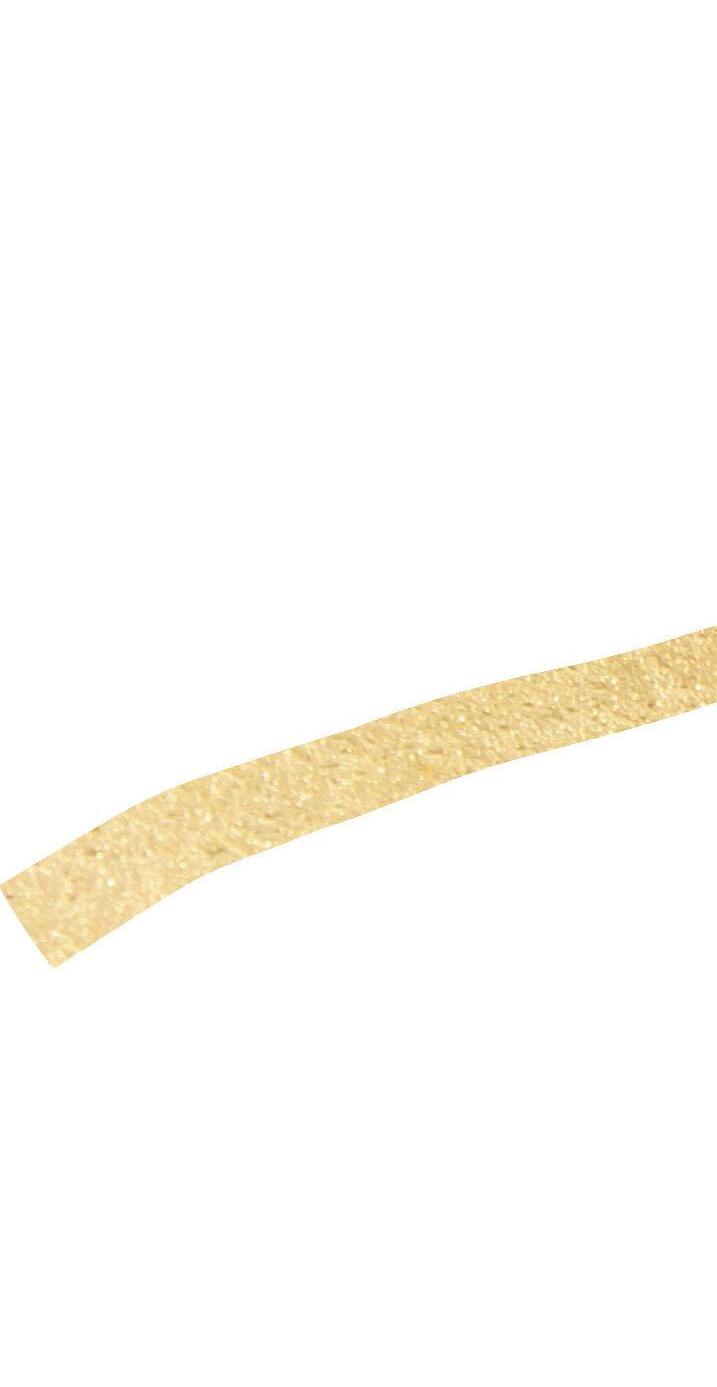


‘There is no such thing as the pursuit of happiness, but there is the discovery of joy.’
IMAGE: PEXELS/KRISTINA KOSTENKO
Joyce Grenfell
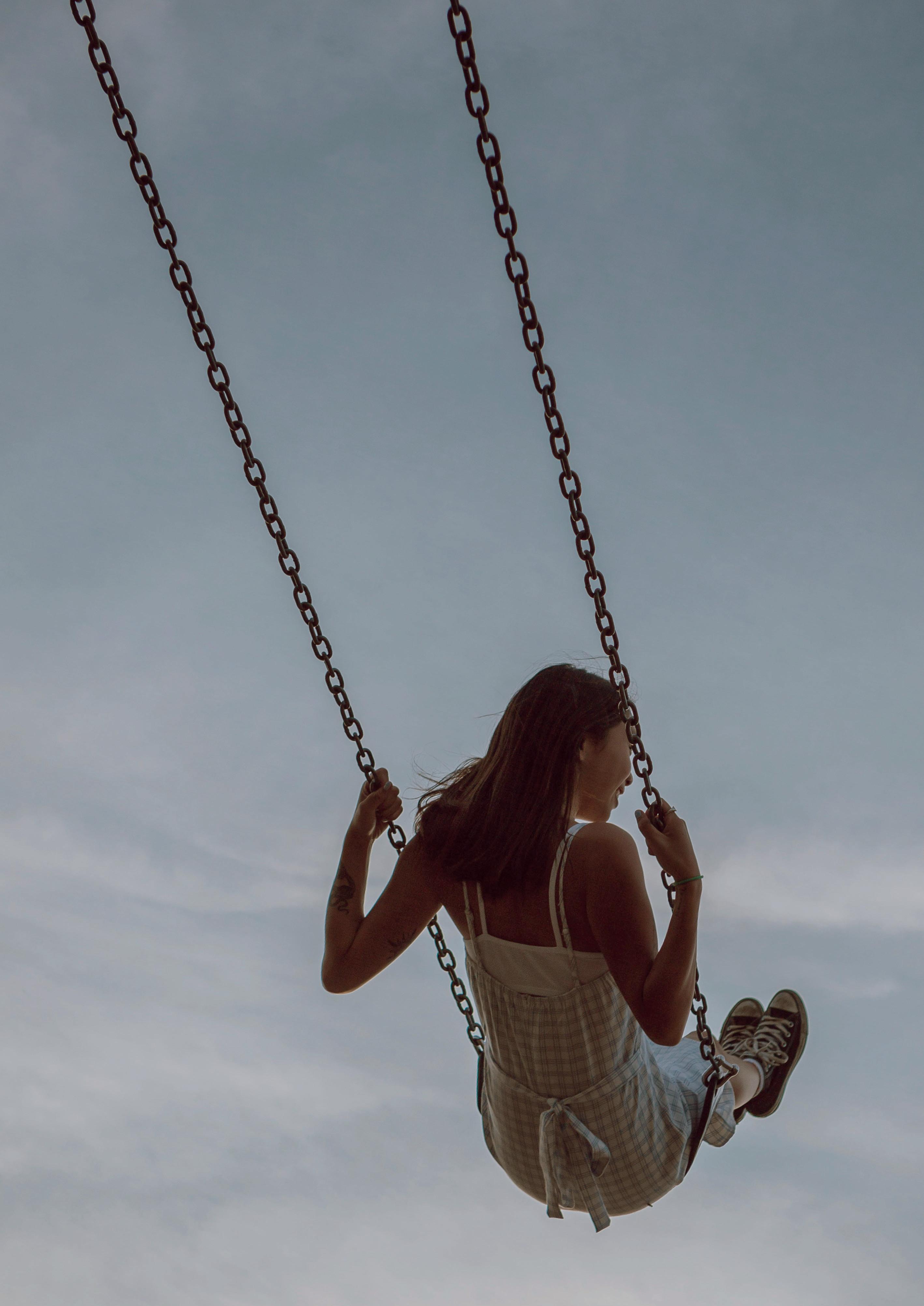
THE POWER OF PLAY
When was the last time you truly played? And why should adults play? Luciana Bellini meets positive-psychology play consultant Jeff Harry, to discuss the power of letting loose
When was the last time you played? I don’t mean the last game of tennis with friends, or office football match. I mean the last time you let loose and allowed your imagination to run free; the last time you abandoned yourself to play, like children do.
If you’re anything like me, the concept of play is something you left behind in your childhood and is something you make little time for in your busy, hectic grown-up life. But studies reveal that engaging in play, just for the sake of it, is something we should all be doing as adults, thanks to its myriad benefits to our physical and mental health.
‘As adults, we are constantly being told to be perfect, and I see play as the opposite of perfection,’ says Jeff Harry, a positive-psychology play consultant. ‘We are constantly hearing negative voices in our head and in the media telling us not to be ourselves. Play connects us back to who we are. Play connects us back to our inner child, who reminds us how to embrace our whole selves, including all the imperfections and flaws.’
Play is similar to meditation in that it helps us focus on the moment and reset our perpetually exhausted adult minds. Being present is something that doesn’t come easy to most of us, but fully engaging in an act of play forces you to focus on the task at hand and nothing else.
‘Philosophers from Plato to Jean Piaget to Friedrich Schiller have all acknowledged that play is the catalyst for all art, invention, new connections and innovation,’ writes author Meredith Sinclair in her book Well Played: The Ultimate Guide to Awakening Your Family’s Playful Spirit. ‘Play ignites our minds in ways only it can.’
69
‘Philosophers from Plato to Jean Piaget to Friedrich Schiller have all acknowledged that play is the catalyst for all art, invention, new connections and innovation,’
IMAGE:
WELLBEING
»
PEXELS/JASMIN CHEW


A study of 898 University of Illinois students showed that frequent play markedly reduces perceived stress levels. Another study at the University of Zurich found a correlation of around 18 per cent between the level of sociable, playful activities and overall life satisfaction. And while experts warn that these studies aren’t perfect – it’s difficult to work out exactly how play affects a person – it’s becoming apparent that harnessing the power of play can have significant benefits for adults.
‘We are tapping into this at this precise moment because, during the pandemic, we got bored,’ says Jeff Harry. ‘We had time to reflect on what brings us joy, who we are, and what type of life we want to live. You saw more adults playing during this time than at any other time in the twentieth century because we had that moment of pause, and that has continued.’
So how can you engage in play meaningfully, as an adult? First, think about activities you enjoyed as a child. If you loved Play-Doh, you might take up a pottery class, or learn how to make bread. If you were that kid who was always scrambling up trees, try indoor rock climbing or abseiling. If you loved drawing or doodling, buy an easel and a set of paints, or spend your downtime filling in an adult colouring book.
Engaging with play means not focusing on the outcome, as you would in most sports and fitness activities. A bike ride to burn calories doesn’t count as play, there are ways to use exercise as play. Rather than thinking of the activity as a chore, think of playful ways to exercise. Instead of swimming laps, have a diving contest with your friends, or replace weekly runs with a game of tag or ultimate Frisbee.
‘I suggest people get bored,’ says Harry. ‘Get bored the way they used to as a kid. What does that mean tangibly? Stop binge-watching Netflix, doom-scrolling, looking at emails or inundating yourself with information. We get more information in a day than people in the 1800s got in their entire lifetime. When you allow yourself to be bored, even if it’s just for five minutes, your mind gets quiet enough to hear your inner child, and your inner child starts to give you suggestions that make you nerv-cited (nervous and excited). And that is when you can fall into flow.’
Perhaps most importantly, you need to get into the play mindset. In his book Play: How It Shapes the Brain, Opens the Imagination and Invigorates the Soul, Dr Stuart Brown defines this as a ‘state of mind that one has when absorbed in an activity that provides enjoyment and a suspension of sense of time’. An an example, Brown says that two people could be throwing a ball back and forth, but one person could be playing while the other person isn’t.
Instead of seeing play as something silly and trivial that’s solely for children, it’s time we understood its power and used it to our full advantage. ‘Play isn’t a frivolous act, but one of the most powerful ways we can communicate our love for life and build some of our strongest connections with each other,’ says Harry. ‘It’s where humanity can be built in the most organic way – on the playground, and that playground just happens to be Earth.’
GRIEF
We don’t stop playing because we grow old; we grow old because we stop playing’
IMAGE: PEXELS/ JASMIN CHEW
GEORGE BERNARD SHAW
‘Walk as if you are kissing the Earth with

your feet.’
IMAGE: UNSPLASH/SYUHEI INOUE
Thich Nhat Hanh




IMAGE: PEXELS/TARYN ELLIOTT
Are we addicted to success?
Is hustle culture dead? Are we waking up to the idea that more work equals more problems? Luciana Bellini explores why being busy is no longer a badge of honour
If the noughties and 2010s were the eras that defined ‘hustle culture’, the 2020s appear to have sounded the death knell for a philosophy that asks us to work ourselves to the bone. Post-pandemic, the world has woken up to a new way of working: one that does away with the daily commute and 9-to-5 grind in favour of a more flexible, work-from-anywhere approach. But is the hustle really dead? Are we done with toxic productivity for good? And, if so, what has taken its place?
Looking into where this overwork culture has left us, the stats make for depressing reading. A UK government report revealed that 914,000 people suffer from work-related stress, anxiety or depression. A 2018 mental health study found 74 per cent of UK adults have felt ‘so stressed at some point over the past year, they felt overwhelmed or unable to cope’. The stats are doubly shocking for women. A McKinsey study showed that 42 per cent of women feel burned out, compared with 32 per cent in 2020 (for men, the total jumped from 28 to 35 per cent). It’s hardly surprising that 2021 came to be known as the year of ‘the great resignation’, after workers all over the world quit their jobs at historic rates.
Showing off about how busy or stressed you are is no longer a badge of honour. Who can forget how, in 2016, Yahoo CEO Marissa Mayer said that working a
75 WELLBEING
» IMAGE:
PEXELS/ANTONI SHKRABA
130-hour week was possible, ‘if you’re strategic about when you sleep, when you shower, and how often you go to the bathroom.’ It seems the tech world has a lot to answer for when it comes to society’s obsession with toxic productivity. After all, it was Elon Musk who, in 2018, tweeted to his millions of followers: ‘Nobody ever changed the world on 40 hours a week.’

Of course, most of us aren’t trying to change the world – at least not in the way Musk is referring to. Most of us just want to have a fulfilling, happy and healthy life: one that involves work, yes, but one that is also rich with love, laughter, friendship and freedom. In a post-pandemic world, sacrificing yourself at the altar of hard work no longer makes sense. Now that we’ve seen how easily the world can be turned on its head, doesn’t it feel more important to live in the moment than to constantly strive for the next arbitrary achievement or marker of success?
Emma Gannon, author of the book The Success Myth: Letting Go Of Having It All, certainly thinks so. A self-confessed recovering ‘success addict’, Gannon wrote the book to try to explain why the traditional version of success is leaving us feeling lonely, unfulfilled and dispirited. To those looking at her life from the outside, it seems as if she has it all: her award-winning podcast, Ctrl Alt Delete, has more than 12 million downloads, and she’s written four nonfiction books and a well-received novel. Yet Gannon admits she was burned out and confused about why she felt so unhappy, even as she was striving for more.
The turning point came after a career highlight, when she was asked to give a prestigious keynote speech. Afterwards, she went back to her hotel room and sobbed. ‘My Instagram feed looked full, busy and exciting,’ she recalled. ‘Friends were messaging me, saying, “You’re killing it.” What was the “it” I was killing? My soul probably.’ Her book has been written as a manifesto to craft work – and life – on your own terms, giving us the confidence to walk away from ‘having it all’ and instead uncover our own path to fulfilment.
In her book Free Time: Lose the Busywork, Love Your Business, author Jenny Blake explains that time is not money – time is life force. Described as ‘a playbook to free your mind, time, and team for your best work’, the book explains how to operate effectively and intuitively, without getting bogged down in ‘busywork’. ‘When you run your own company, “hard” work no longer has a direct correlation to the profit you generate,’ writes Blake. ‘There is no guarantee that pouring more time into your business will yield positive results.’ As she explains, working less is often harder than working more, as it requires building sophisticated systems and trusting your team. But it’s more than worth it for the rewards. Blake now works an average of ten to twenty hours per week and pulls in nearly $700,000 of revenue each year.
The shift in work attitude – which some are coining ‘the age of anti-ambition’ –has seen a marked change in the way we view our careers. This is doubly true if you happen to be a millennial or a member of Gen Z, who see having work flexibility as a necessity, rather than a nice-to-have.
‘The future isn’t about where we work, but how,’ say Anne Helen Petersen and Charlie Warzel in their book Out of Office. Our jobs no longer form the basis of our identities; now, for many, they’re just something you do to pay the bills. That’s clear to see in the rise of the ‘quiet quitting’ craze on TikTok: a movement that refers not to leaving your job but to doing the bare minimum and putting in no more time, effort or enthusiasm than is absolutely necessary.
76 WELLBEING IMAGE: PEXELS/ENERGIEPICCOM
If hustle culture is dead, it’s now time to usher in the era of human culture. What that looks like in practice will be different for each person. For me, it means working only three days a week, so that I can spend the other two with my three-year-old daughter before she starts school next year. It means saying yes to the commissions and projects that excite me and that fit within my schedule, and turning down those that don’t. For some of my friends, it means joining the estimated 35 million digital nomads that are now travelling and working remotely from locations around the world.
At the end of last year, 100 UK companies signed up for a permanent four-day working week with no loss of pay, in a policy described as ‘transformative’. There is change in the air, and it all appears to be moving in the right direction. It would seem the working world is finally waking up to what Blake summarises so succinctly in her book: ‘Now I know, deep within my bones, how non-negotiable it is to be present in my business and life.’

77
‘Most of us just want to have a fulfilling, happy and healthy life, one that involves work, yes, but one that is also rich with love, laughter, friendship and freedom’



‘The world is full of magic things, patiently waiting for our senses to grow sharper.’
IMAGE: UNSPLASH/MELISSA ASKEW
W. B. Yeats

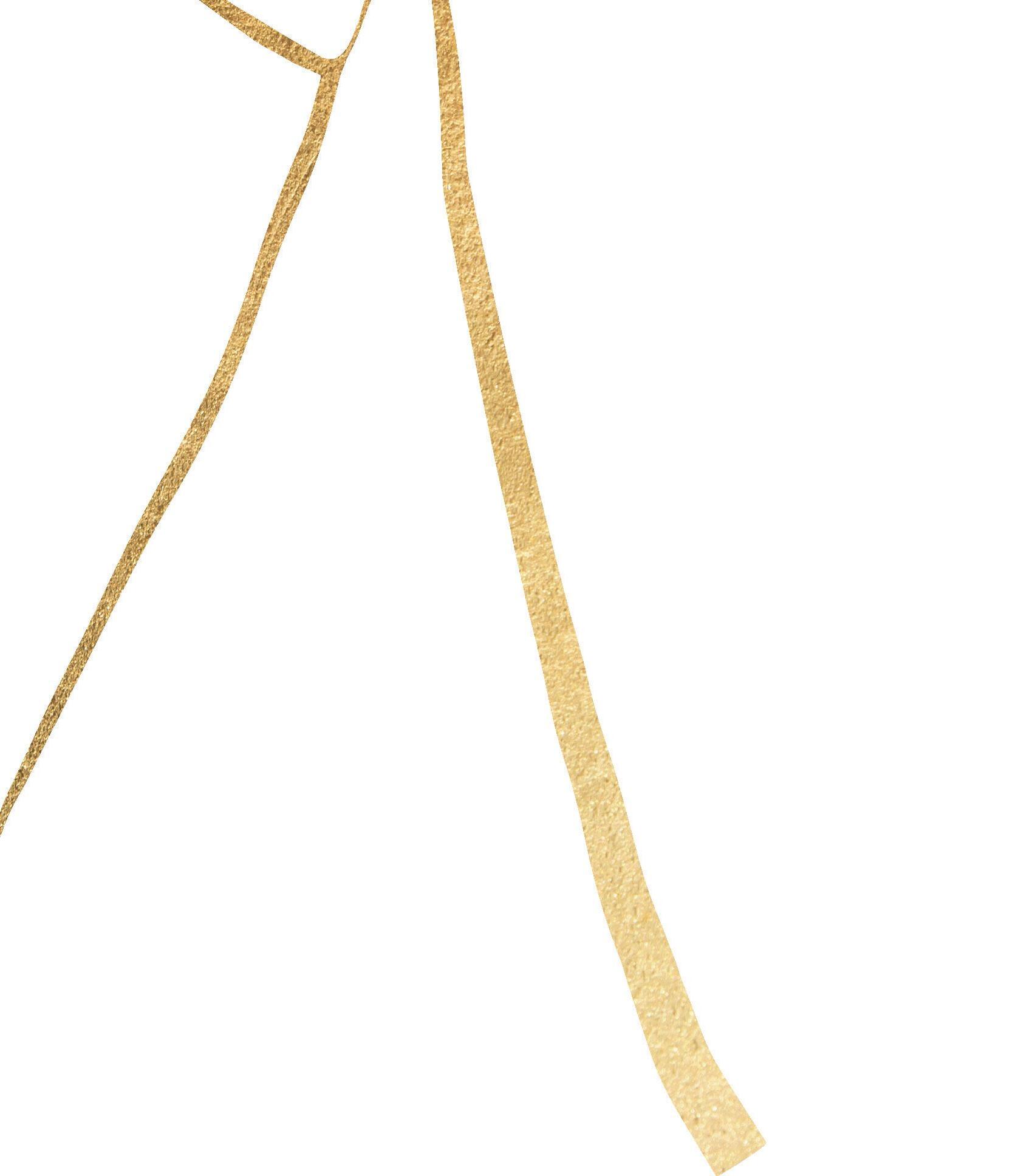

The Body
Reconditioning
The summer body has been the subject of countless programmes and column inches but what if we decided to really just enjoy and love what we already have. To celebrate it, not change it. Katy Young explores how we can improve our relationship with our body for good
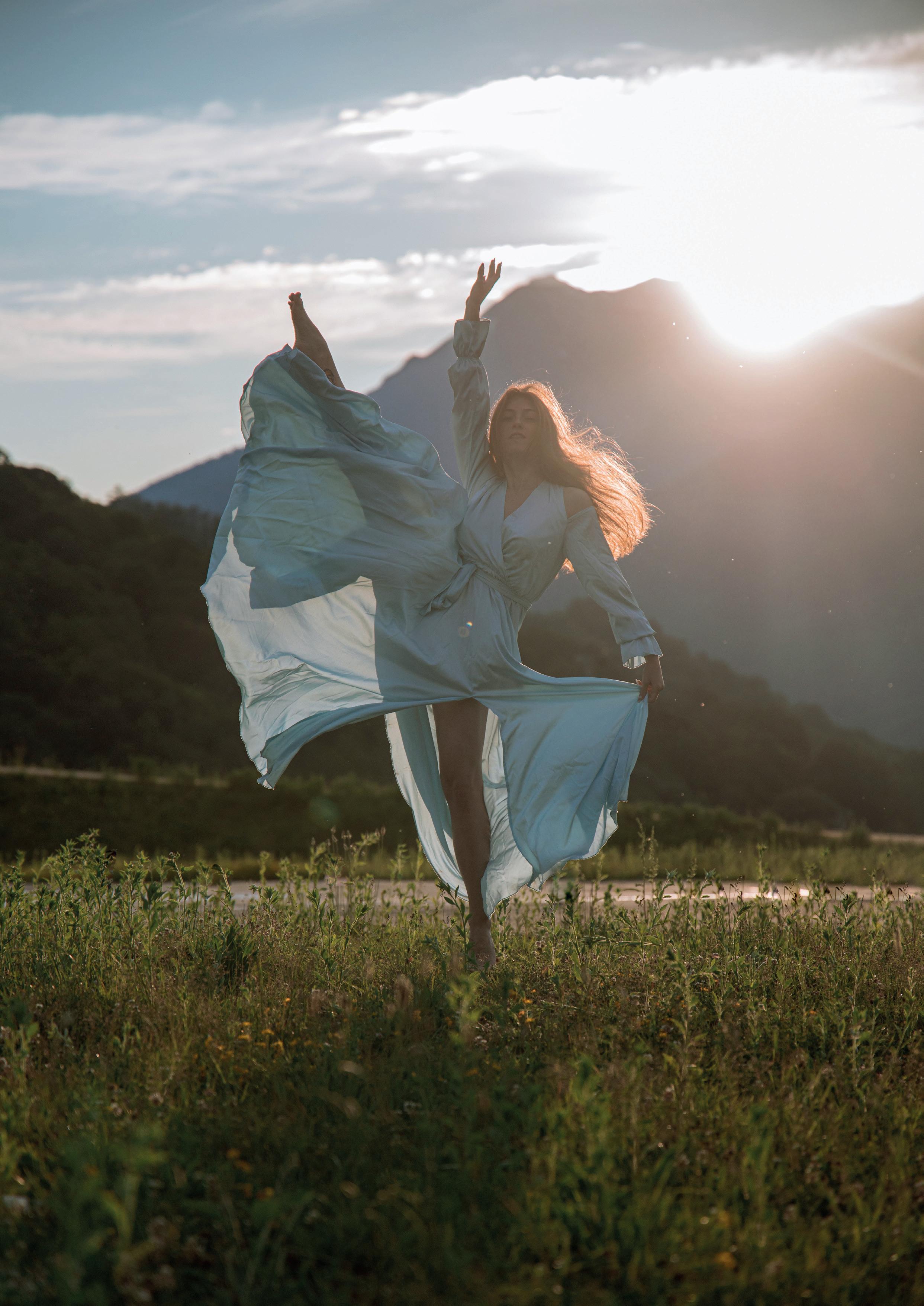
Eckhart Tolle struck the body beautiful balance when he wrote, ‘Emotion arises at the place where mind and body meet. It is the body’s reaction to your mind.’ It follows that we owe it to ourselves and souls to strike emotional balance, happiness even, when it comes to finding some kind of ‘body beautiful’ this time around.
For the outdated notion of the perennial ‘Summer Body’ battle has long been documented as toxic practice for both mind and body, the end goal ultimately something that doesn’t and shouldn’t belong to us at all. Whose body is it anyway?
Yours. And once you accept, celebrate, and find confidence in that, suddenly the body beautiful begins to happen, truly. So, let’s start focussing on a little body reconditioning instead. Enjoying, supporting and fine tuning what you have, and even what you think you have.
Your body is amazing; it carries the load emotionally and physically, without you even noticing. Though, it’s likely that our system is doing the heavy lifting without reaching its potential, for both, unless we help it along.
We are designed to move, but as with so many modern afflictions, our day-today efforts are not enough. Our anatomy requires that we move in every direction, beyond the morning commute, that walk to the coffee shop, a stretch for the coffee cup, or the click of our seatbelt by our sides. Our muscles are like rubber bands –which means the more we stretch them, the more relaxed and comfortable they become. This might start with a few minutes of stretching every day (done best before bed so that your body won’t sleep and set into any tightness).
When you start to enjoy and find more time for movement, slowly move onto some weight work to refine the movements, and create newfound strength in all the right places. Begin with a weight you can happily lift, in every direction- up, down and around - up to 15 times in proper form. Start with one to two sets, and progress to three before increasing the weight. There is no need to get to a gym, or hire a personal trainer, as at home apps and workouts are just so good but please, do take your time to find a virtual trainer you want to see again. The same goes
for your cardio hit; until you’re there, walk or cycle an extra 20 minutes a day, for a completely natural take on balanced movement.
Your new strong form will improve your posture, and therefore your mood and emotional load too. Research shows that posture and mood are directly linked, while exercise itself can help us regulate our emotional responses.
A good, protected, collagen supplement is a good idea now too. As you limber up and out, collagen will ease off joints, and speed up your recovery. While it will also go some way to protecting and boosting your hair and skin. Which is exactly the sweet spot you want to hit.
A new generation of skincare and beauty extols just that. Rather than turning back the clock, stretching both our faces and time, we are now being told to enjoy the face we have as best we can. Exosomes, the latest buzzword ingredient in skincare, are trailblazing this new philosophy to get your best skin yet, ‘your’ being the operative word. Able to encourage the communication between skin cells, exosomes act like the ultimate self-help fix for good skin so that it can hydrate, smooth, and regulate itself.
Meanwhile, facial acupuncture is giving the aesthetic industry a run for its money, by both unblocking energy flow and triggering stress responses in our skin to encourage our own healthy response. Interestingly, wrinkle relaxing treatments are too being side-lined for facial exercises and yoga, which stimulate the muscles and lymphatic system to soften tension, stress, and worry in the face.
Hair treatments both on shelf and in salon, to condition, smooth and nourish, also indicate a wave of your ‘own’ best hair yet – without the need for dyes, styling, and heat. The industry ideal now is not the prolong the life span of your beauty, but its health span.
A quick fix, this is not. But a better, perhaps best long-term, fix? Absolutely. In an age when everything around us feels like it is losing its whirring mind, it feels far more human and healthier to slow down and better up. This isn’t about forcing or faking change fast but finding your real rhythm so that can you maintain your own body beautiful, forever.
81 BEAUTY IMAGES: YAROSLAV SHURAEV
Your body is amazing; it carries the load emotionally and physically, without you even noticing.
THE GOOD LIFE
As days warm and nights lengthen, what could be better than beauty and skincare that complements the warmth, happiness and sun-dappled delights of summer? Look good with these feelgood products, from fresh lip colours to radiant face oil


BEAUTY
THE CLEANSER
Super Sensitive Cleansing Cream, £55, Votary

Summer skin can be sensitive and reactive. Thankfully, the latest launch from natural skincare brand Votary is a calming cleanser designed to deal with redness. The brand’s first non-oil, rinse-off formula melts away dirt, impurities and makeup, while supporting the skin’s essential barrier function. With Votary’s unique blend of 21 super seed oils to nourish, soothe and enhance, as well as oat extract and a proven calming complex, it’s a potent blend.
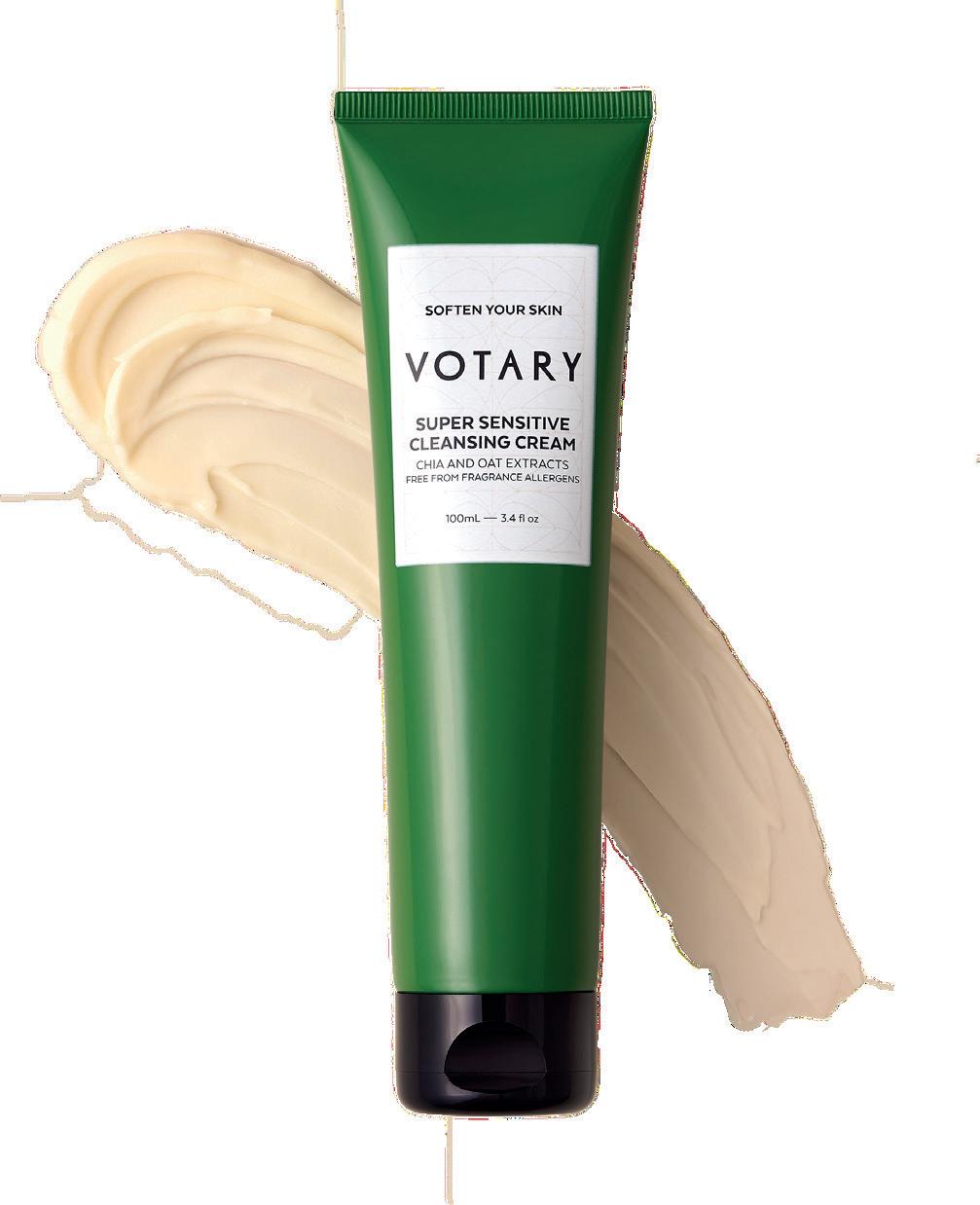
THE EYE PALETTE
Pure Paradise Eye Quad, £43 and Afterglow Liquid Blush, £37.50, both Nars Want a quick ticket to a sun-kissed glow? Nars’s tropical island-inspired Pure Paradise range includes the sunsetevoking Light Reflecting Setting Powder and quad eyeshadow inspired by the peachy-pink Nars Orgasm blush – ideal for summer. Then there’s the light and creamy Afterglow range, whose liquid blush is loaded with hydrating agents (including antioxidant-rich vitamin E that fights environmental aggressors) and which brings a radiant rush of colour.


THE BRONZER
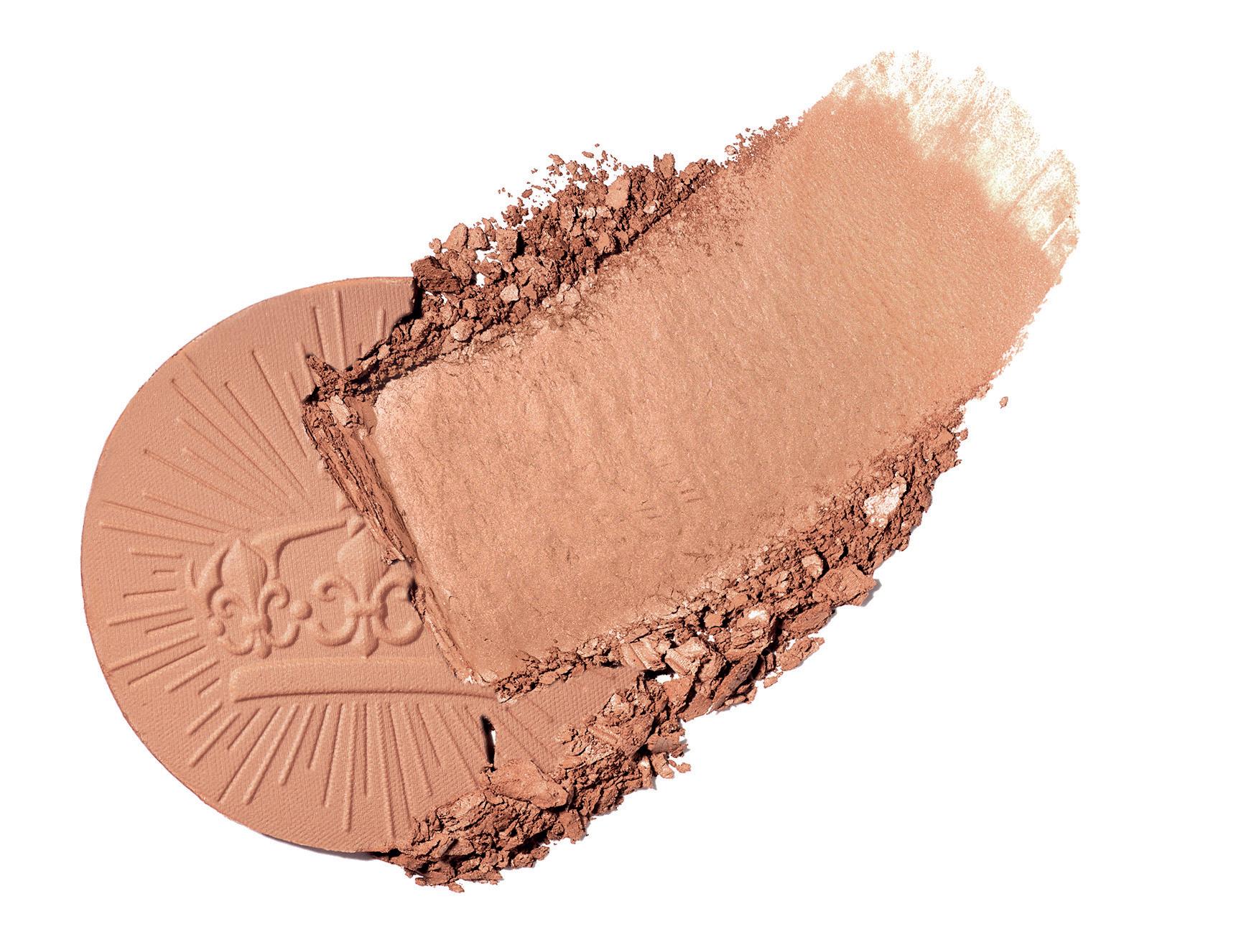
improve her acne, Fiona Stewart sourced the finest mulberry silk. The results were so dramatic that she launched Slip. Now the brand boasts scrunchies and turbans that minimise damage to your hair, and pillows and eyemasks that reduce sleep creases. Its latest Dolce Vita designs are inspired by an Italian summer.
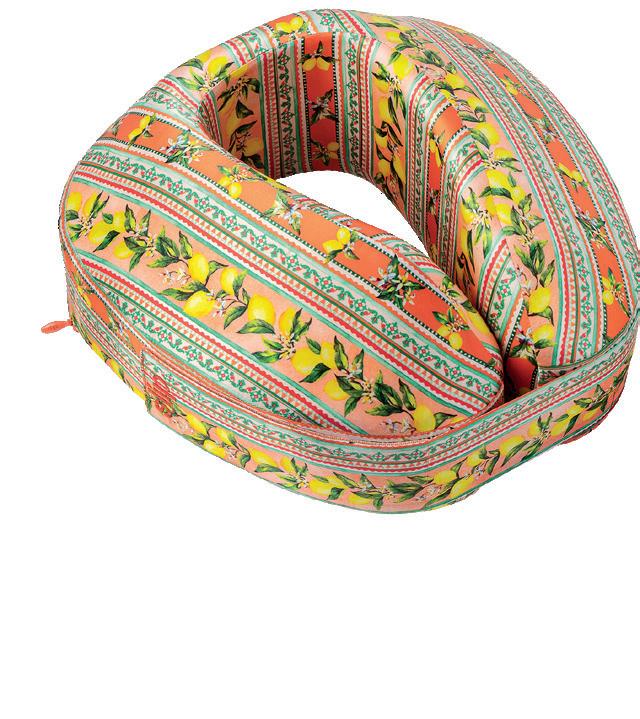
THE TOOTHBRUSH
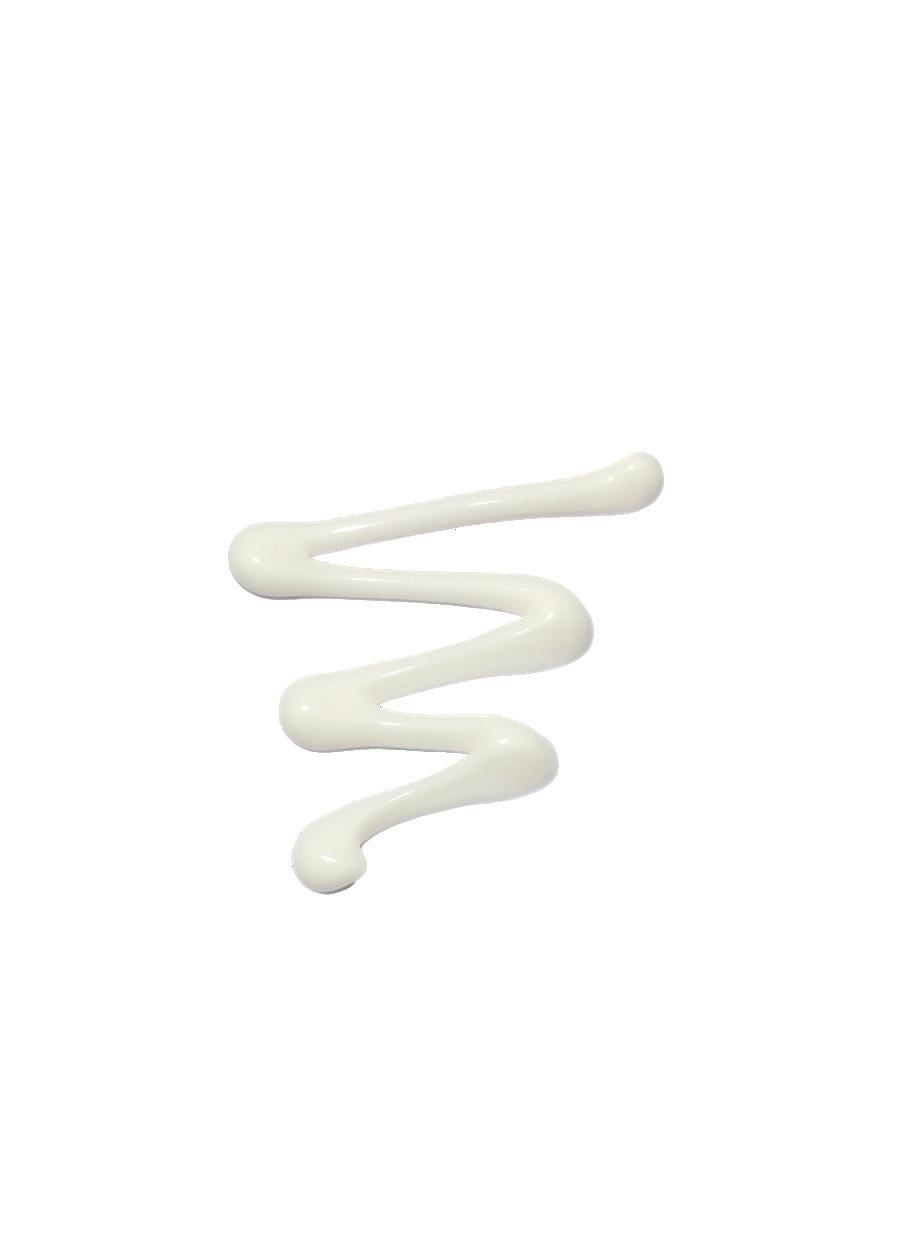
Sustainable Electric Toothbrush, £75, Suri Each year, four billion toothbrushes are thrown away – enough to circle the earth twelve times. So it’s little surprise that Suri, with its recyclable heads and reusable design, is becoming the sustainable toothbrush of the moment. Perfect for taking on holiday, its battery lasts for more than forty days, while the brush comes in a slimline travel case with a built-in UV light that kills 99.9

Skin Fetish: Divine Bronzer, £40, Pat McGrath Labs Looking for a bronzer to sculpt, define and bring radiance this summer? This micro-velvet powder bronzer by Pat McGrath Labs is luxuriously smooth and infused with luminosity. A blend of oil-absorbing powders and micro-refined golden pearls locks radiance into your complexion, for a sun-kissed glow. In eight demi-matte colours designed for all skin tones, it has been carefully crafted to balance red, golden, and neutral hues, as well as create that face-framing definition.

THE SUN CREAM
Sun Cream Body SPF30, £110, Dr. Barbara Sturm
Hot on the heels of the Super Anti-Aging Body Serum, Scrub and Cleansing Cream comes Dr. Barbara Sturm’s Sun Cream Body with SPF30. Lightweight, nongreasy and marine-friendly, there isn’t much it can’t do, including protecting against UVA and UVB rays, sun and photo-ageing. It also nourishes the skin, with extract of superfruit lingonberry, purslane and vitamin E to ward off freeradical stress, and prickly pear and panthenol to calm redness. Best is the menthol that gives it a cooling effect and minty fragrance.

84 BEAUTY
THE HAIR TREATMENT
Nutriplenish Replenishing Overnight
Serum, £42, Aveda

Sun-stressed, dried-out hair needs vegan haircare brand Aveda’s transformative, lightweight treatment. Designed to replenish overnight, its nutrient-rich superfood complex –mango butter, organic coconut oil and organic pomegranate oil – creates an invisible layer of power-packed nourishment, to rehydrate dry, brittle strands. After eight hours, your hair will be replenished and manageable.
THE FRAGRANCE
Eau Nabata, £210, Diptyque Diptyque’s captivating summer fragrance launch is Eau Nabati. The work of perfumer Fabrice Pellegrin, the eau de parfum captures the essence of a lush paradise garden on the Mediterranean coast. Balancing the warmth of amber with the fresh notes of citrusy bergamot, cooling green petitgrain and the sweet scent of Peruvian balsam, its intriguing layers create a burst of rich, botanical beauty.

THE LIPSTICK

Lipstick, £62, Dries Van Noten When it comes to uplifting colour, it doesn’t get more sunshine-bright than Dries Van Noten’s refillable lipstick range. Simply choose a case and your colour from more than thirty shades, in satin, sheer and matte finishes. They add a pop of the designer’s amazing eye for print and colour to your day.



THE SUPPLEMENT

The Essentials, £15, The Nue Co.
Boosting wellness is always a focus in summer. That’s why The Nue Co has launched The Essentials, a collection of everyday vitamins and minerals to support cell function growth and repair, immunity, hormone health and energy. Highly absorbable, carefully sourced and at the optimum dosage, they ensure we get all the nutrients we need, including vitamins B and C, iron and a powerful multi-mushroom complex that supports healthy brain function and neuron generation.


85 PREVIOUS PAGE IMAGES:
UNSPLASH/MOURAD
SAADI/BEN SCOTT. THIS PAGE: SHUTTERSTOCK.
»
THE CANDLE
Candle, £45, Discothèque
Summer calls for scents that captures the season’s joyful vibe. Step forward Discothèque, the candle brand created to evoke parties and clubs of the disco era. Made in the UK from high-grade vegan wax, and presented in handsprayed glass jars, the candles come in nine fragrances. ‘Upstairs’ features

THE LIP COLOUR

Essential lip compact, £72, Fara Homidi When it comes to colour, the name on everyone’s lips is Fara Homidi. The Afghani makeup artist presents a refillable lip duo that preps and finishes in one compact. The longwearing matte colour – lightweight but highly pigmented – feels smooth and comfortable. In four shades, it delivers a cream-to-powder finish that you simply layer over the cushiony Prime Baume.
Exclusively at Space NK is French skincare brand Ulé. Its Phyto oil can be used topically and orally to support skin from within. All the ingredients are sustainably sourced and grown by the brand’s vertical farm outside Paris. Rich in vitamins and antioxidants, it comforts, hydrates and protects.

THE MERMAID HAIR
Five Step System, £70, Merwave Embrace beach-worthy waves with Merwave’s fivestep kit. It awakens natural movement and reduces frizz, so hair becomes softer and waves become more defined and stay intact for days. Begin with the shampoo and conditioner, then the Feed treatment that infuses the hair with nutrients. Foam locks in waves and adds lift at the roots. Finally, a lightweight gel gives you a beautifully bouncy wave.

THE EYE GELS
Serve Chilled On Ice Firming Eye Gels, Patchology

Hot, dry indoor air can irritate our eyes at this time of year, while makeup removal and heavy creams overburden our skin. Patchology’s new Served On Ice firming eye gels give a deliciously refreshing boost to tired eyes. Simply pop them in the fridge before using and allow the cooling gel – and cocktail of skin-smoothing, de-puffing ingredients –to brighten the whole eye area. Boasting bauchiol, a plant-based alternative to anti-ageing retinol, cloudberry oil, a potent source of vitamin C and peptides to keep skin firm and plump, they are effective and fast.

86 BEAUTY
IMAGES: PEXELS/ANGELO PANTAZIS, SHUTTERSTOCK



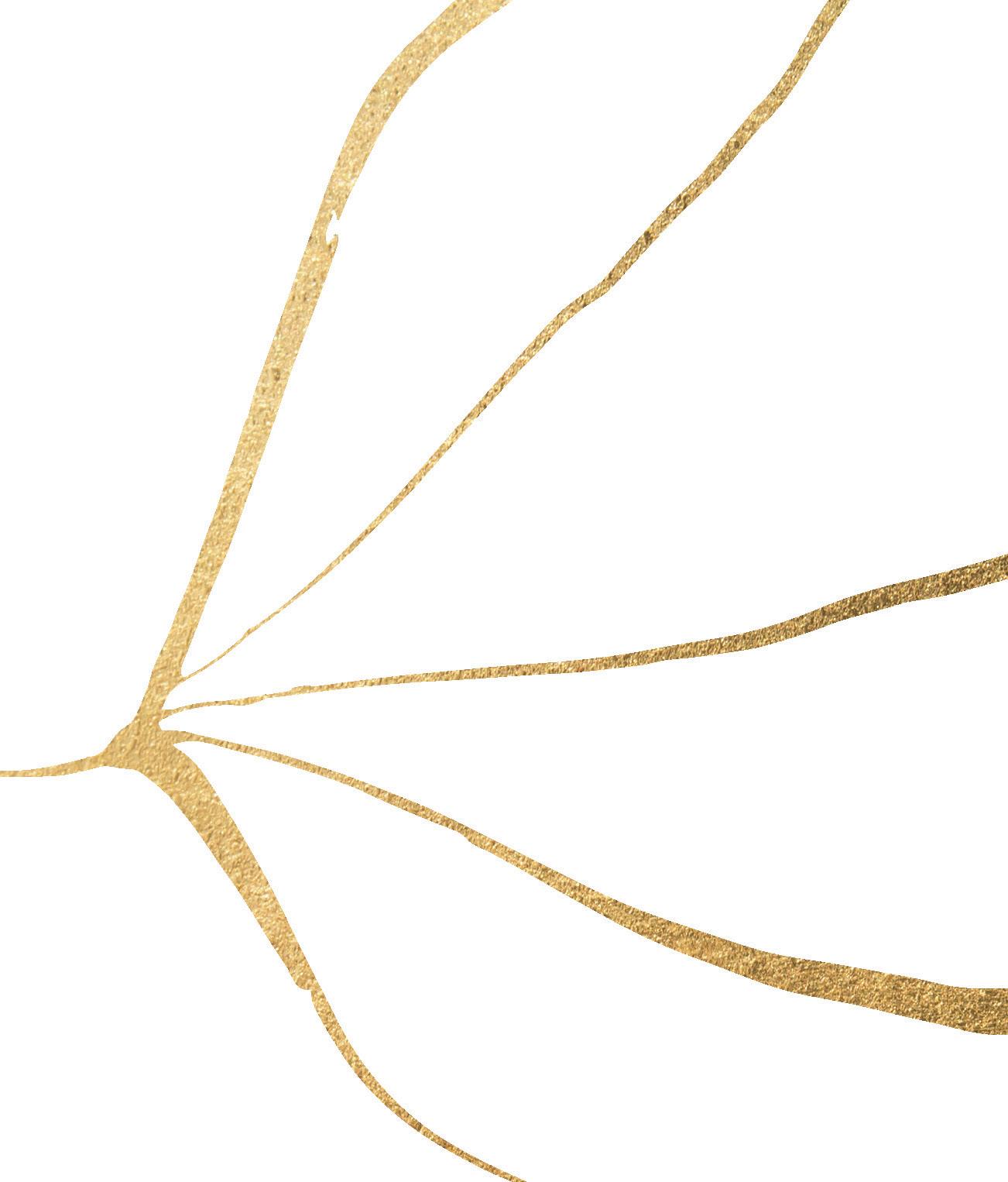
IMAGE: UNSPLASH/JONATHAN BORBA
‘When you do things from your soul, you feel a river moving in you, a joy.’
Rumi
The psychological effect of colour
Colour is a many splendored thing, says Dr Asma Naheed

Imagine a world without colour. We take the lush greens, soothing blues and bold reds that make up our world for granted, but colours have a great impact on human nature and are instrumental in shaping our lives and personalities. A dedicated study of the psychology of colour looks at how it affects emotions, behaviour and personalities, and uses this knowledge to improve our daily lives, relationships and mental wellbeing.
Colours impact on our emotions and behaviour. Warm colours such as red, yellow and orange tend to evoke excitement, passion and energy. Cooler colours such as blue and green tend to have a calming effect, evoking feelings of peace, tranquillity, and relaxation.
Even the shade is significant. Bright colours make us feel happy and positive. Dull colours have the opposite effect; a feeling of ‘don’t look over here’. Our language is peppered with terms based on colour: someone is ‘washed out’ when they are tired; we wear ‘rose-tinted glasses’ to see through an optimistic lens. Colours change how people respond to each other: consider the different impression you would have of someone dressed in pink, as opposed to grey. Colours speak long before we do.
Colours have long been used symbolically: the white of a wedding dress indicating purity, the purple of Advent and Lent symbolising penance, sacrifice and preparation. They enable us to express ourselves and communicate our emotions and thoughts at a glance. They can also be used practically: Queen Elizabeth II would often wear brightly coloured outfits, ensuring the public could spot her in a crowd.
The power of colours to influence our emotions is used to treat people with mood disorders or to help those who need to deepen their selfawareness. Colour therapy is used to treat depression, anxiety and PTSD. It literally changes the way someone sees the world. Therapists believe different colours can harmonise or rebalance the body’s inner vibrations. If nothing else, simply looking at something bright can lift our mood.
90 SLUG HERE
PAUSE FOR THOUGHT
This psychology can also be used to influence our behaviour and emotions, whether we realise it or not. The use of red in advertising, restaurants and food packaging is not by chance: red stimulates appetite and increases the heart rate, making us feel hungry and intrigued.
It can also get us hooked on unhealthy habits. Junk food wrappers, phone apps and gambling machines, resplendent in bold bright colours, light up dopamine receptors in our brains before we even touch them. For those battling technology addiction, turning your phone’s display to grayscale: removing colour from the screen can be an effective deterrent. Our brains are wired to look for bright, colourful, exciting things. Draining the colour removes the positive reinforcement and dampens the urge to reach for the phone.
To live life well, we must choose the colours of our lives just as an artist would. Our life is a canvas: it is up to us to choose what colours to use and what kind of picture to paint. We can select colours that reflect our personalities and beliefs, or the way in which we would like to be perceived. Are we to be the confident and outgoing woman in bold, bright colours? Or the cool, calm and collected type in elegant, neutral shades? The choice is yours.
Dr Asma Naheed PhD is an educational psychologist and life coach who specialises in therapeutic and behaviour management
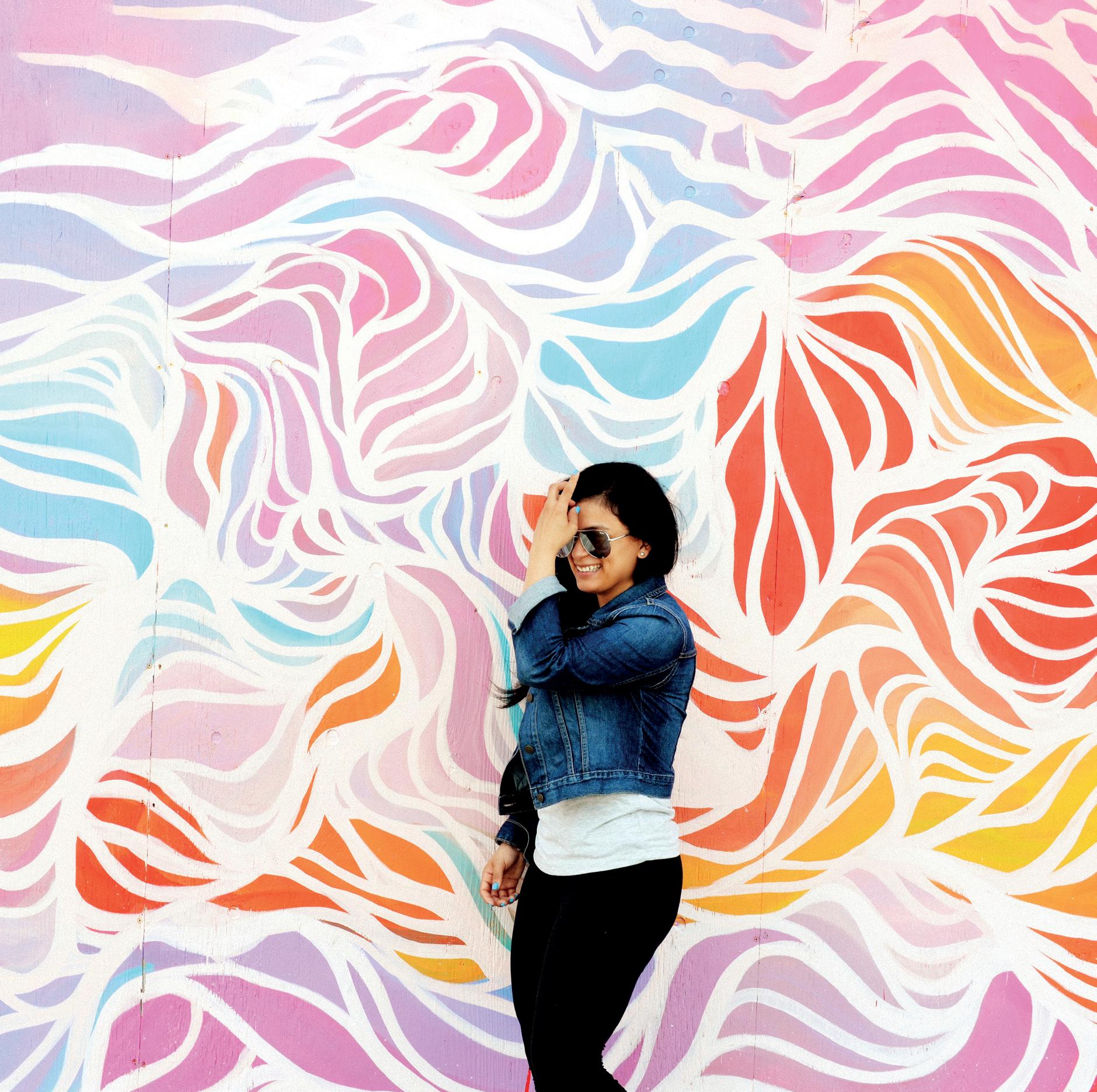
91
IMAGE: PEXELS/KEY NOTEZ
up at

‘Look
the stars and not down at your feet. Try to make sense of what you see, and wonder about what makes the universe exist. Be curious.’
IMAGE: PEXELS/CRISTOFER MAXIMILIAN
Stephen Hawking


Jewellery – the ultimate mood-booster
Our columnist explores how the power of jewels goes beyond their mere appearance
As with a lot of things related to fashion, jewellery is often dismissed as a lightweight subject; a visual symbol of beauty, wealth and luxury, and nothing more. But did you know that jewellery can have a positive effect on one’s mental health? Studies have found that the simple act of wearing jewellery can help usher in a more positive mindset.

Jewellery, like any other accessory, can impact on how we feel about ourselves. A necklace or bracelet can remind us of a special memory or loved one, bringing a sense of warmth and comfort in difficult times. When we wear special pieces from loved ones, we carry a sense of connection and security with us throughout the day. A necklace with a meaningful pendant can serve as a constant reminder of our values and beliefs. A bracelet with our birthstone or zodiac sign creates a deeper connection with our individuality. Wearing jewellery featuring certain colours or gemstones can enhance our mood and promote positive energy.
My love for jewellery dates back to my childhood, when my mother would adorn me with beautiful bracelets, necklaces and earrings. It wasn’t until later in life that I realised how much these trinkets meant: the emotional value they held far outweighed the pieces themselves. They made me feel more confident and beautiful, but they also brought me a sense of comfort in times of stress. A physical thing to hold onto, a reminder that I am loved.
But the emotional impact goes beyond sentimentality. Wearing jewellery can tangibly improve our mood and therefore reduce our stress levels. The brilliant sparkle of a diamond or the shimmer of a fine gold chain can be a source of real joy and pleasure. It can invoke a feeling of appreciation for beauty and elegance, contributing to an overall sense of wellbeing.
94 SLUG HERE
UNBROKEN
‘When we wear special pieces from loved ones, we carry a sense of connection and security’
For those who suffer from depression or anxiety, jewellery can offer a distraction from negative thoughts and emotions. Whether it’s a new piece or a cherished heirloom, wearing these items can give us something to focus on and lift our spirits. During the winter months, when lack of sunlight can negatively impact our mood, a touch of added sparkle and shine can go a long way towards lifting the spirits, bringing a little light and warmth to our lives.

In an increasingly uniform world, jewellery serves as a way to personalise our look. Even the plainest outfit can be lifted: a fabulous necklace or pair of earrings adds a touch of femininity and beauty, providing us with a moment to pause, admire and appreciate our own style. As Elizabeth Taylor wrote, jewellery has the power to be the ‘one little thing that makes you feel unique’.
Jewellery can also be a conversation starter, creating opportunities to connect with others. A simple compliment can spark a conversation in which we learn more about each other’s interests, experiences and style.
For me, jewellery is not just a symbol of luxury and beauty, but an effective tool for improving mental and emotional wellbeing. From sentimental value to an uplifting boost, a simple piece of jewellery can make a significant impact on our wellbeing. So the next time you find yourself admiring a piece of jewellery, remember its power to bring joy, comfort and healing.
Najla Mae suffered a lifechanging injury in 1999 and has since been using her recovery to inspire others through their own journeys
95 SLUG HERE
IMAGE: PEXELS/BROOKE CAGLE
ST OR Y OF W ISD OM
The power of a word
A short and simple lesson

There is a story told that once a Sufi was healing a child that was ill. He repeated a few words, then gave the child to the parents, saying, ‘Now he will be well.’
Someone who was antagonistic to this said to him, ‘How can it be possible that by a few words spoken, anyone can be healed?’ From a mild Sufi an angry answer is never expected. But this time he turned to the man and said, ‘You understand nothing about it. You are a fool.’
The man was very much offended. His face was red. He was hot. The Sufi said, ‘When a word has the power to make you hot and angry, why should not a word have the power to heal?’

IMAGE: SHUTTERSTOCK


‘When a word has the power to make you hot and angry, why should not a word have the power to heal?’
98 SLUG HERE Al-Muqit God’s name The Nourisher, The Sustainer





















































 Luciana Bellini
Luciana Bellini



 Emma Johnson
Emma Johnson































































 IMAGE: UNSPLASH/ROCKNWOOL
IMAGE: UNSPLASH/ROCKNWOOL






























































